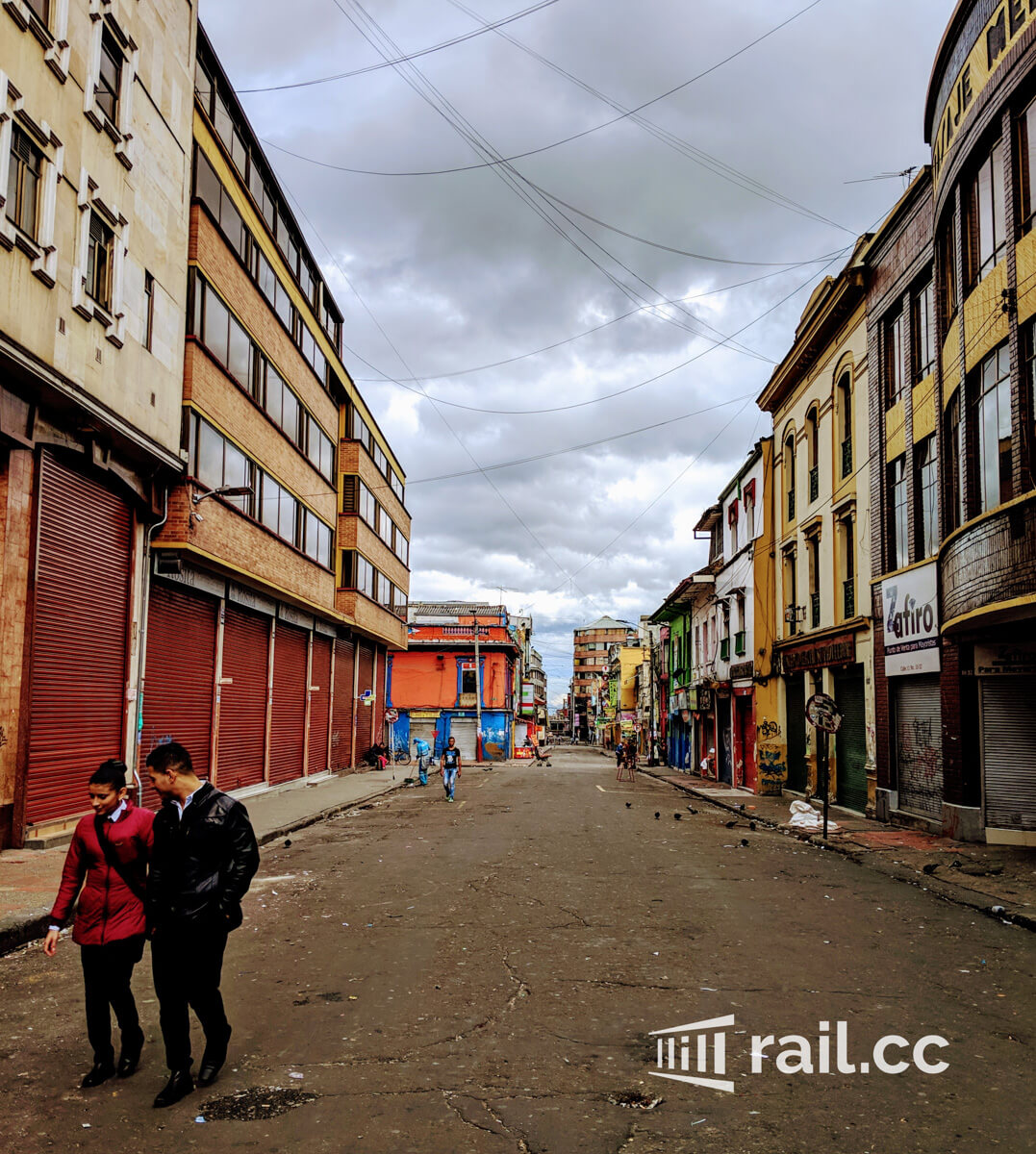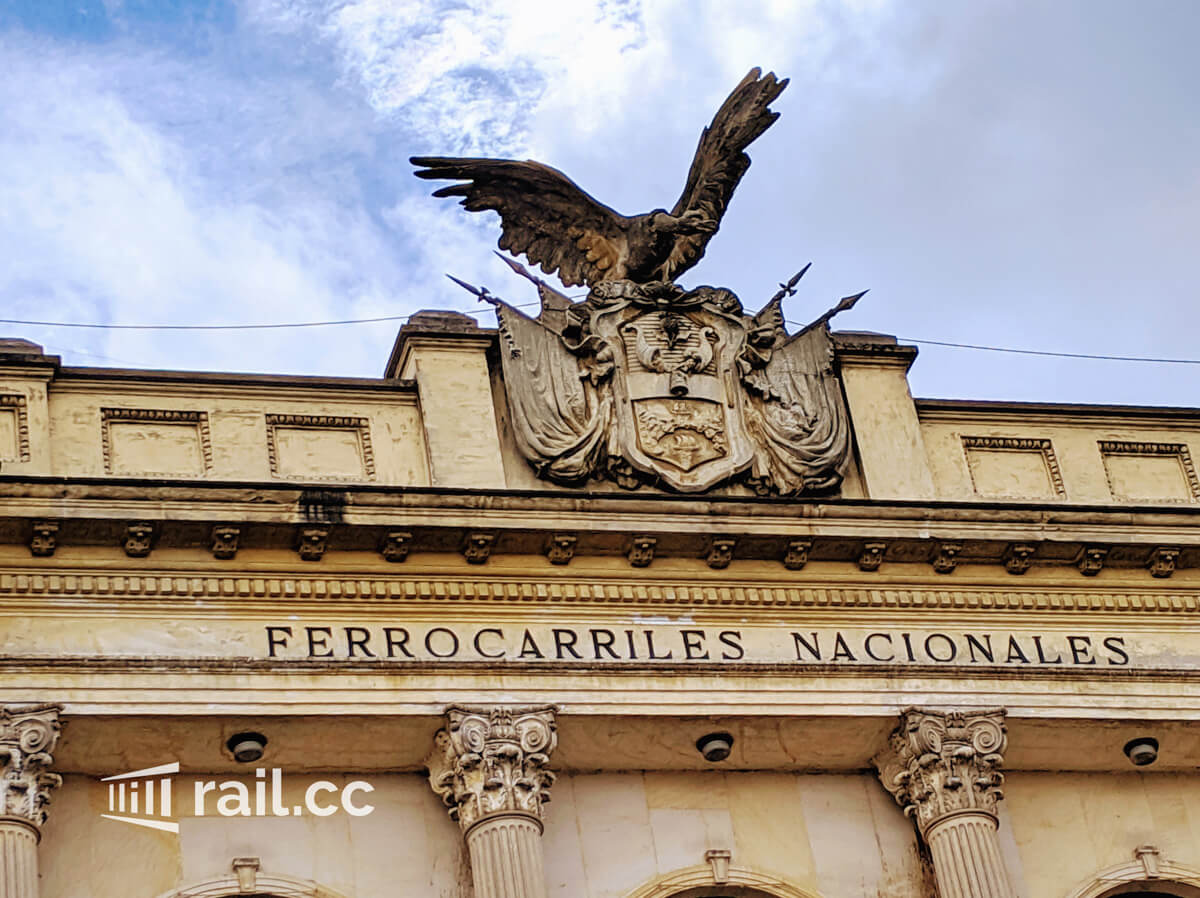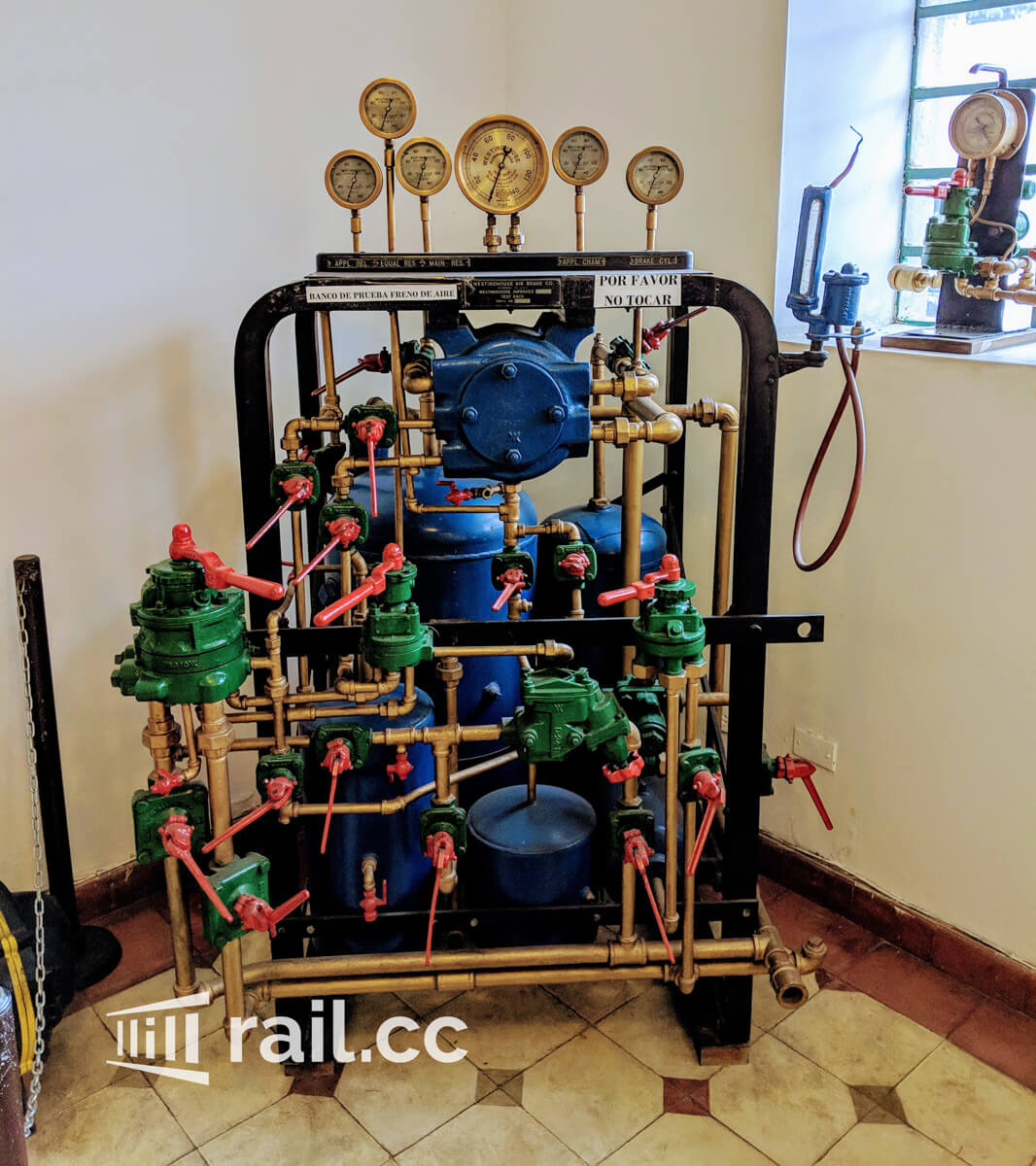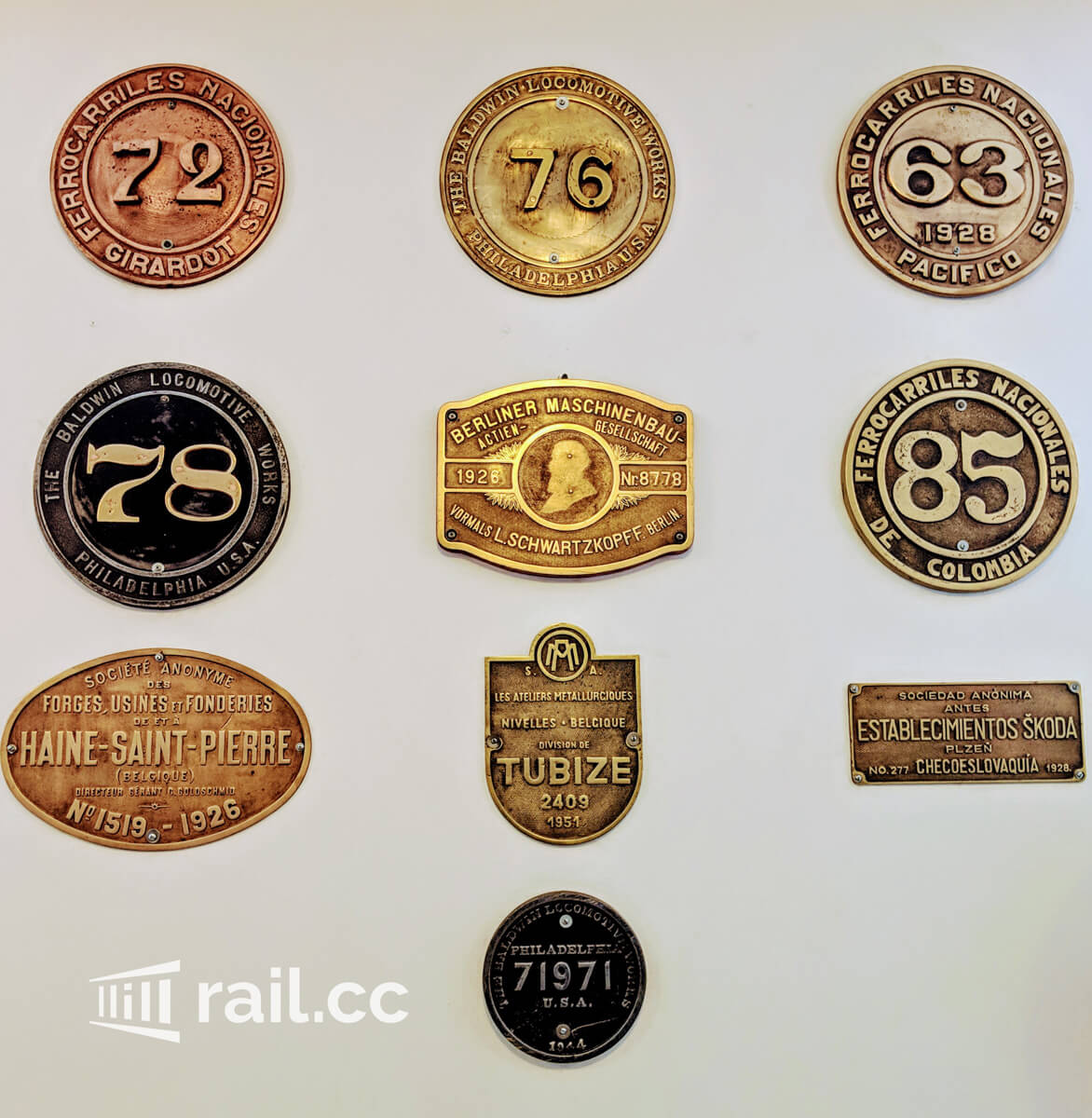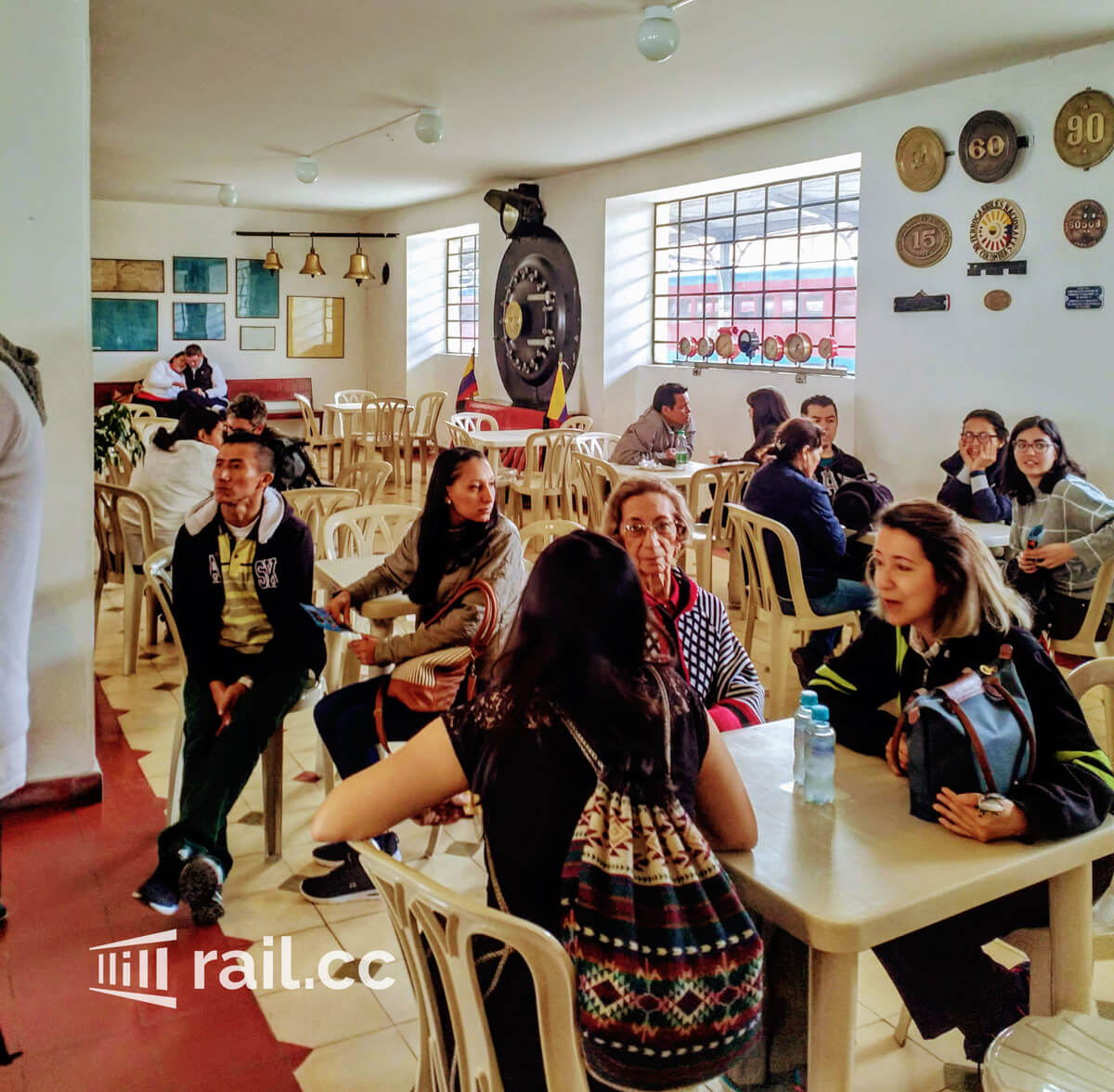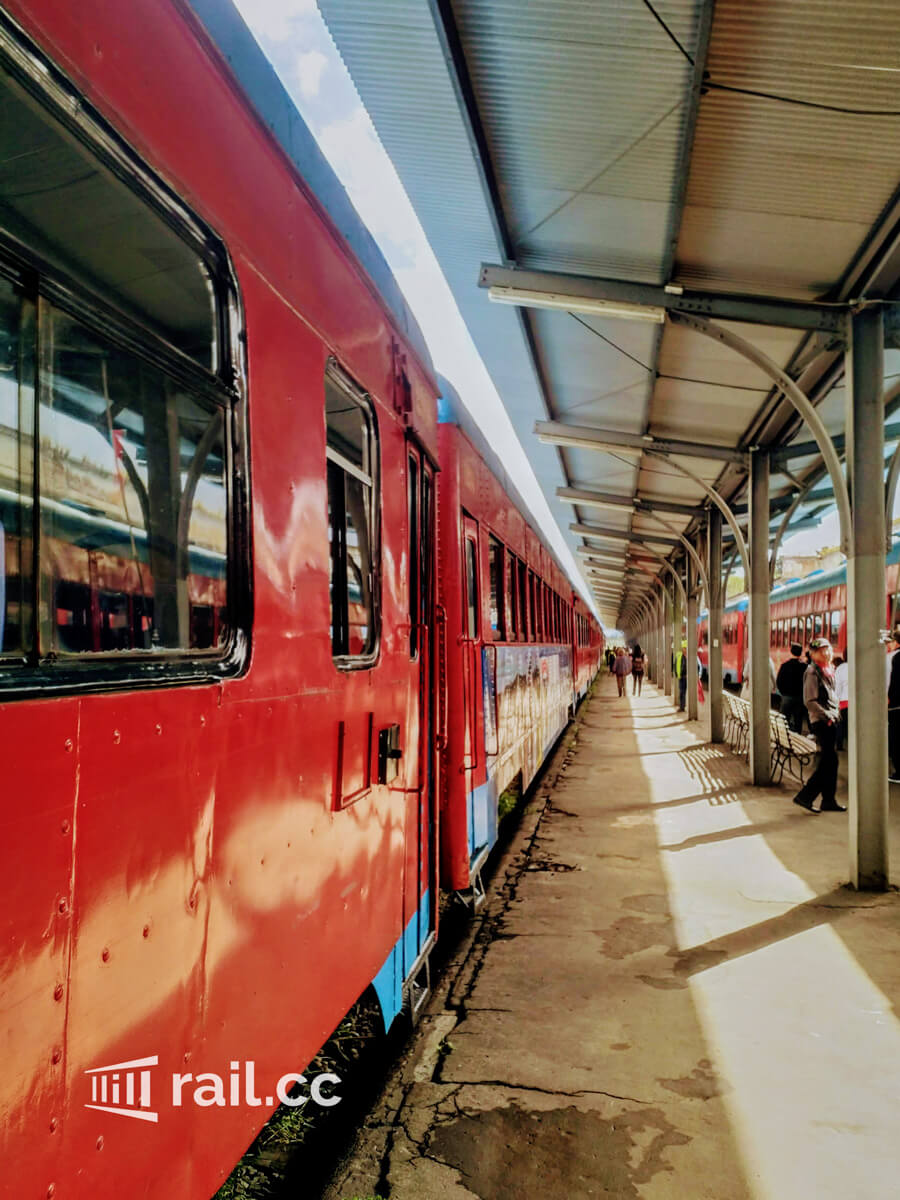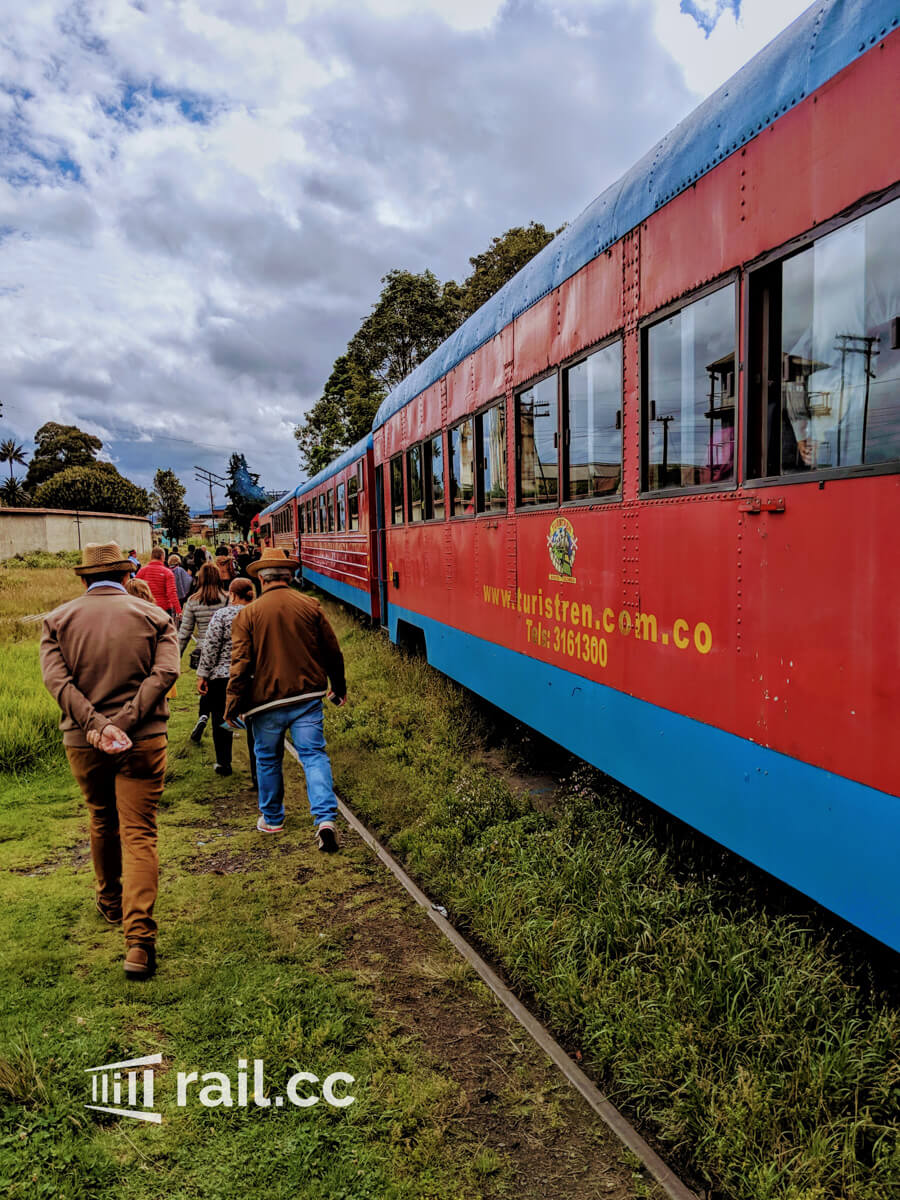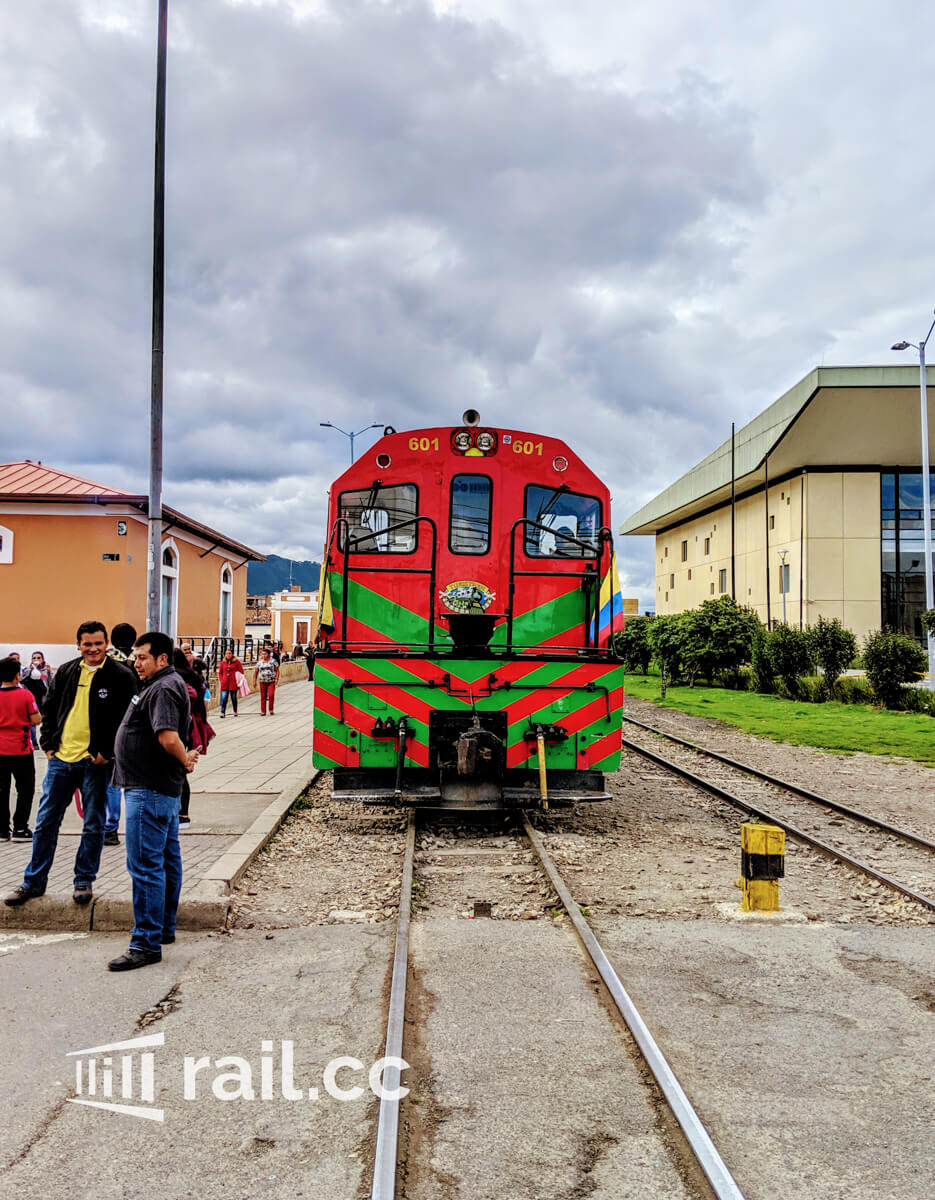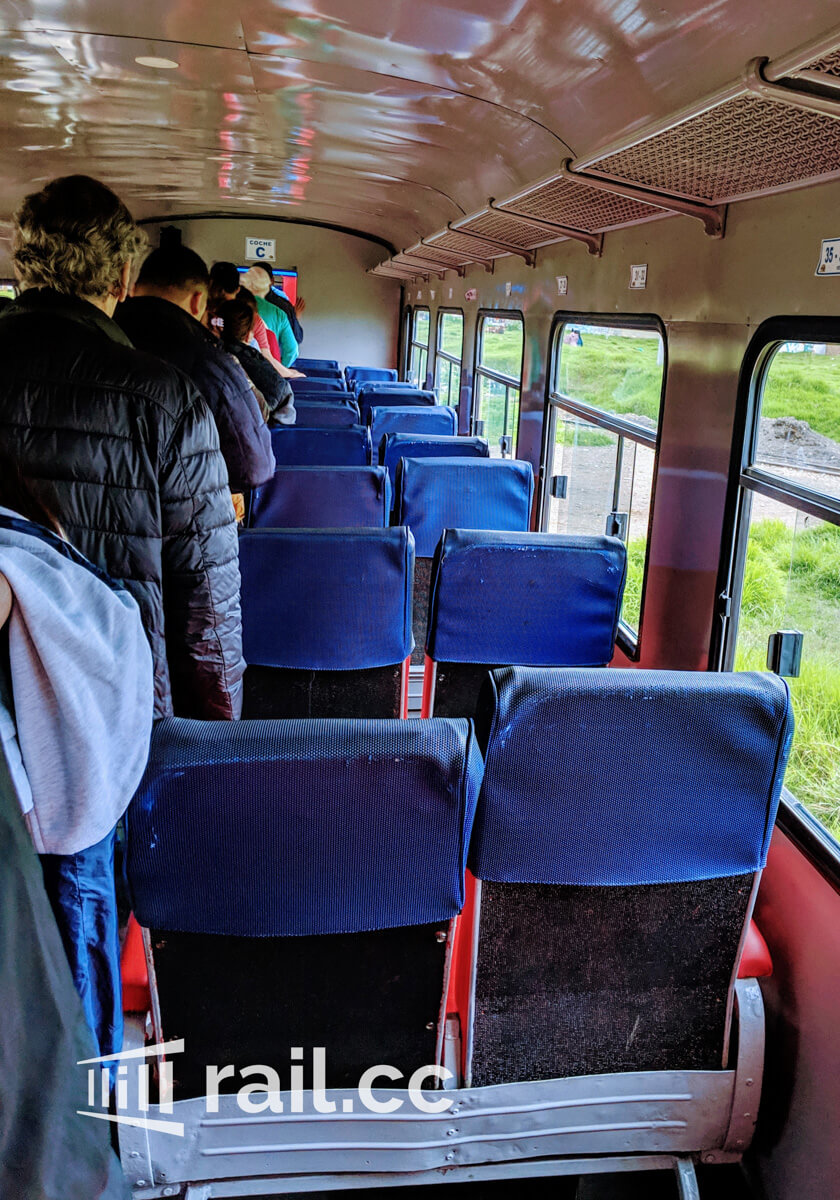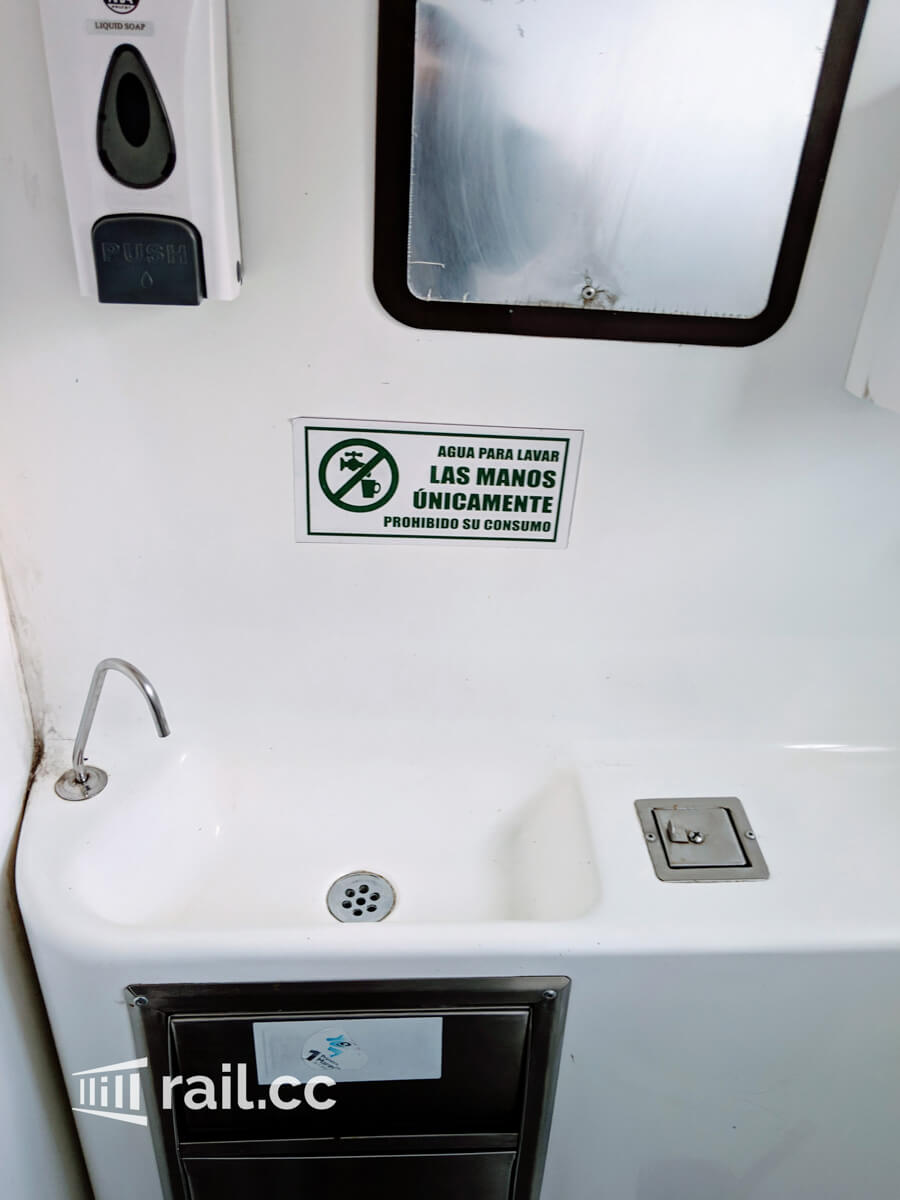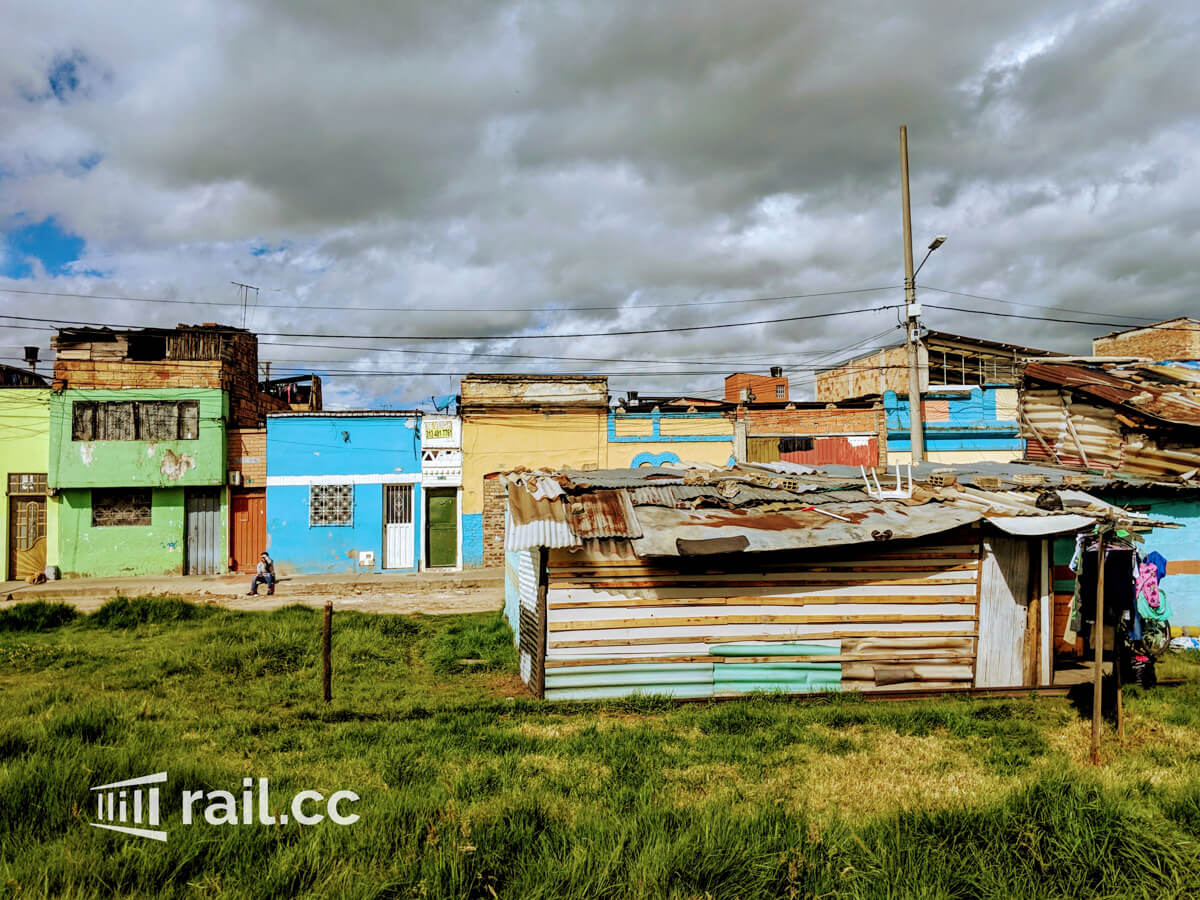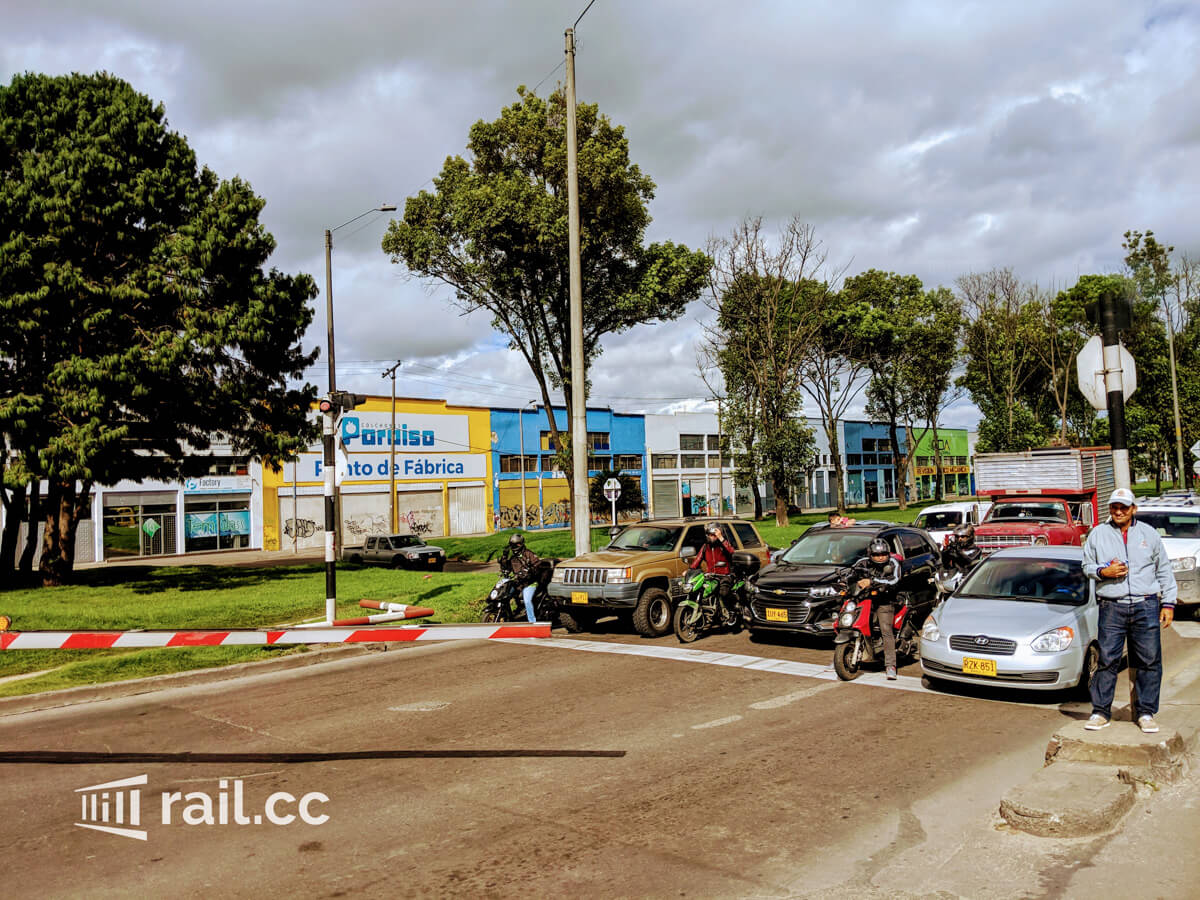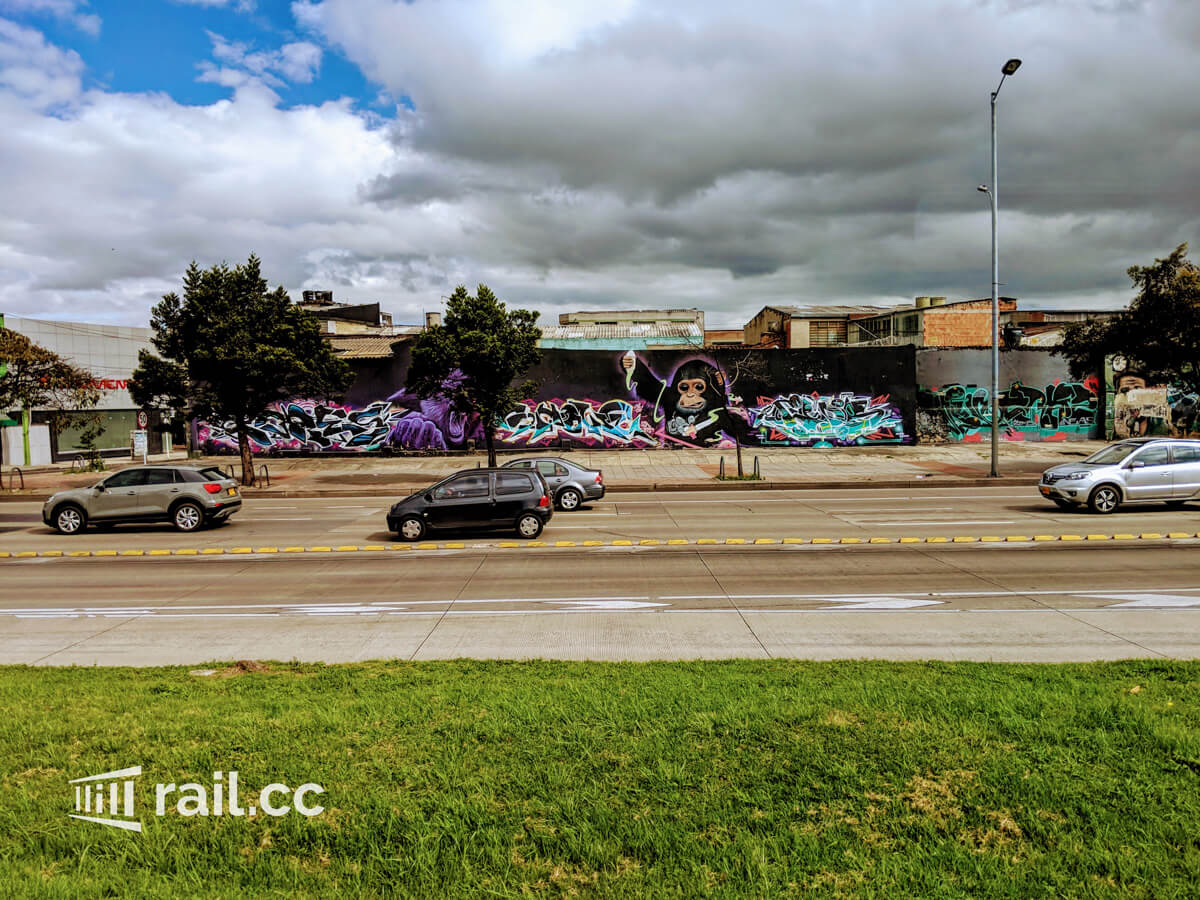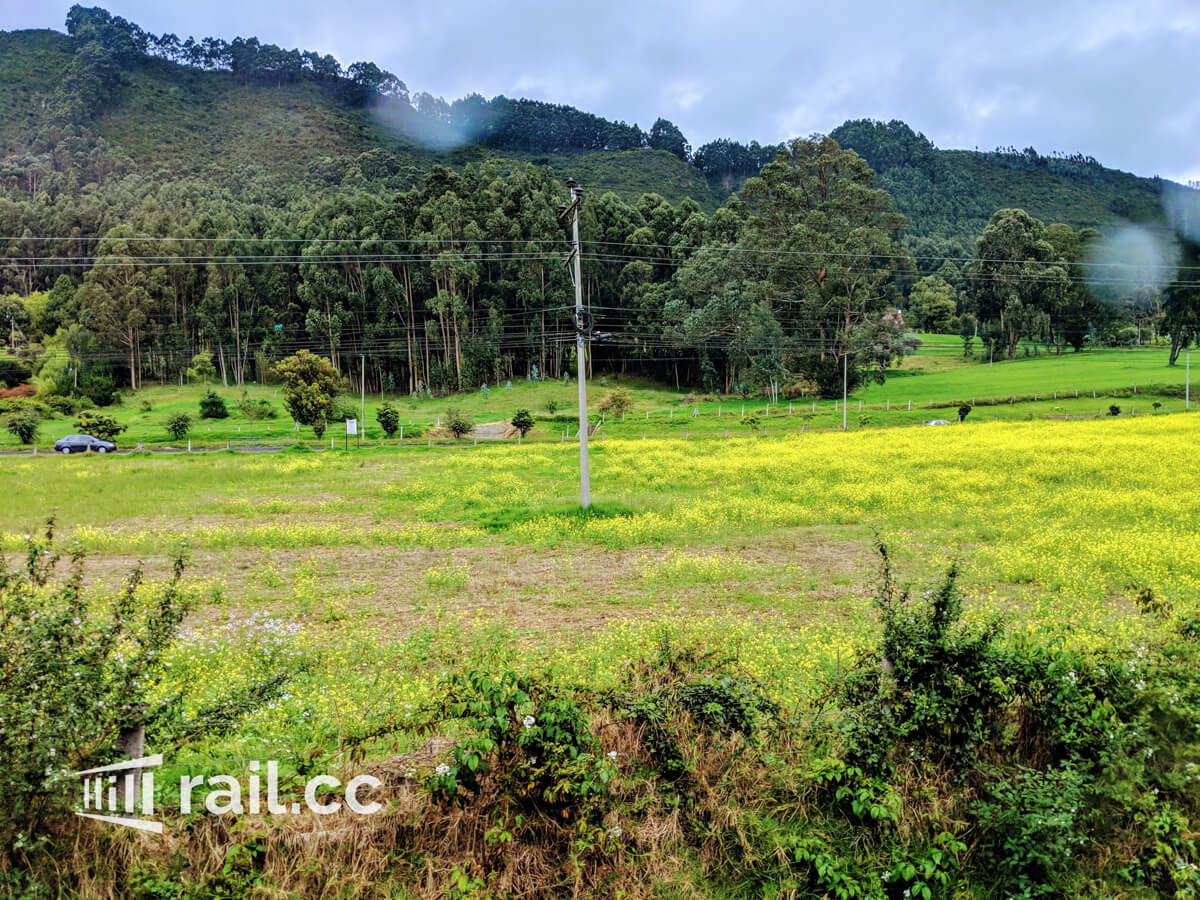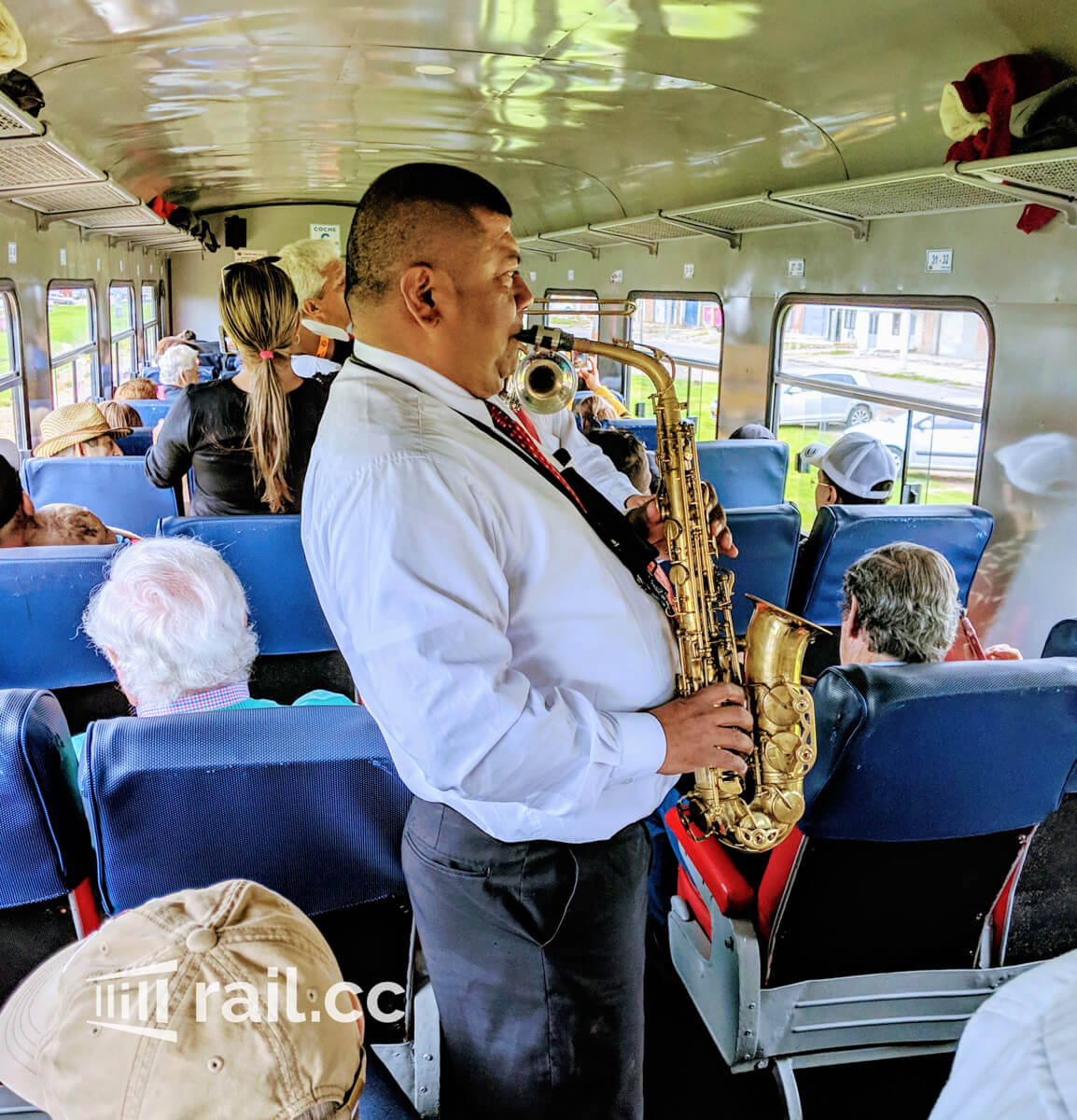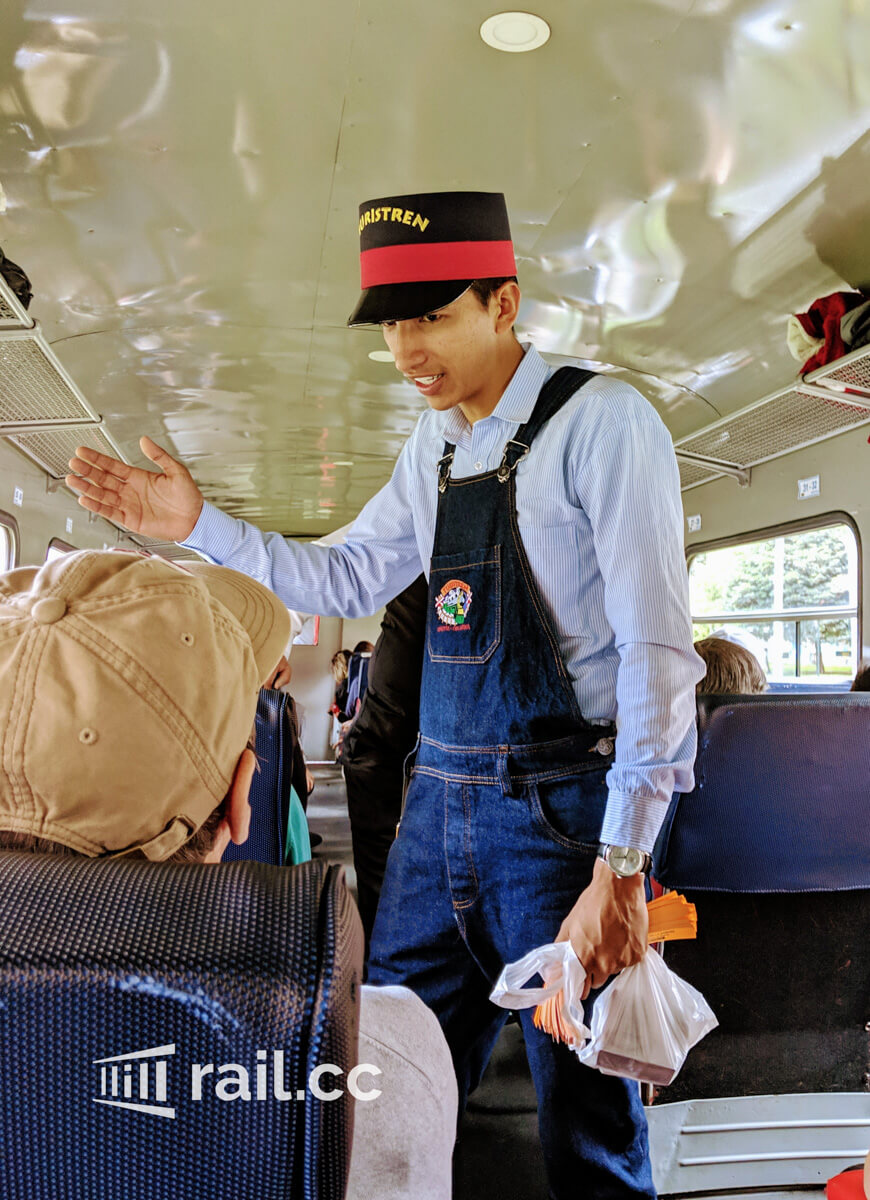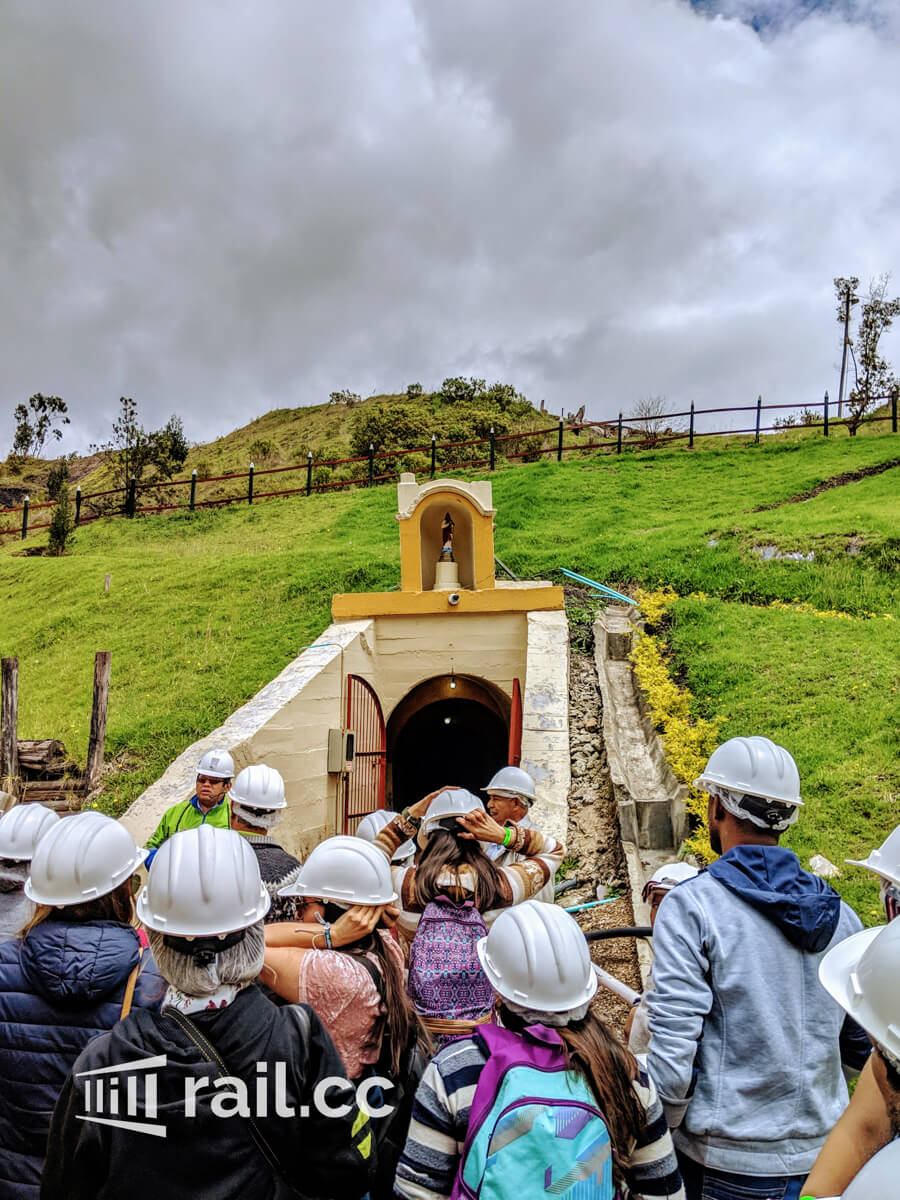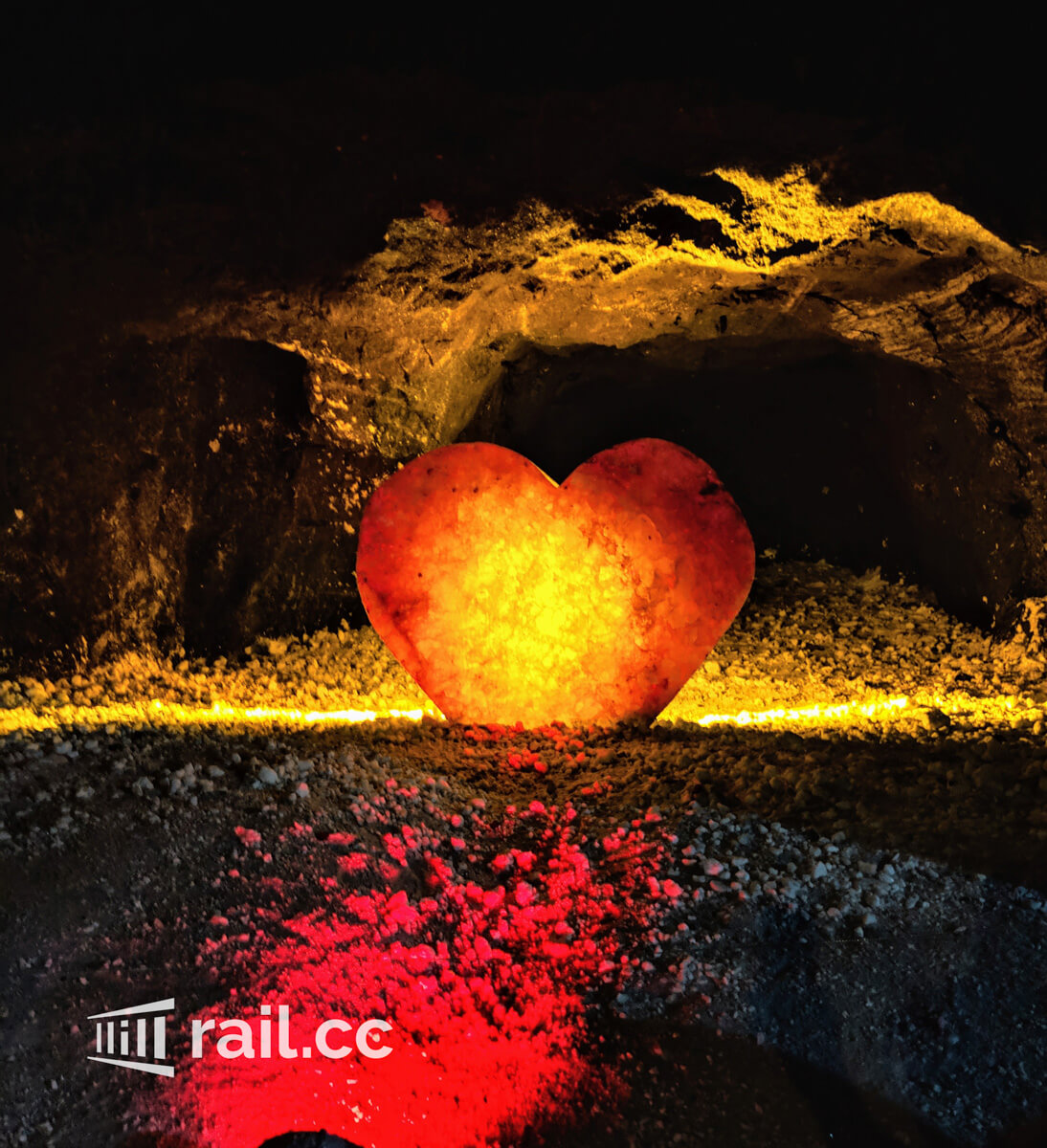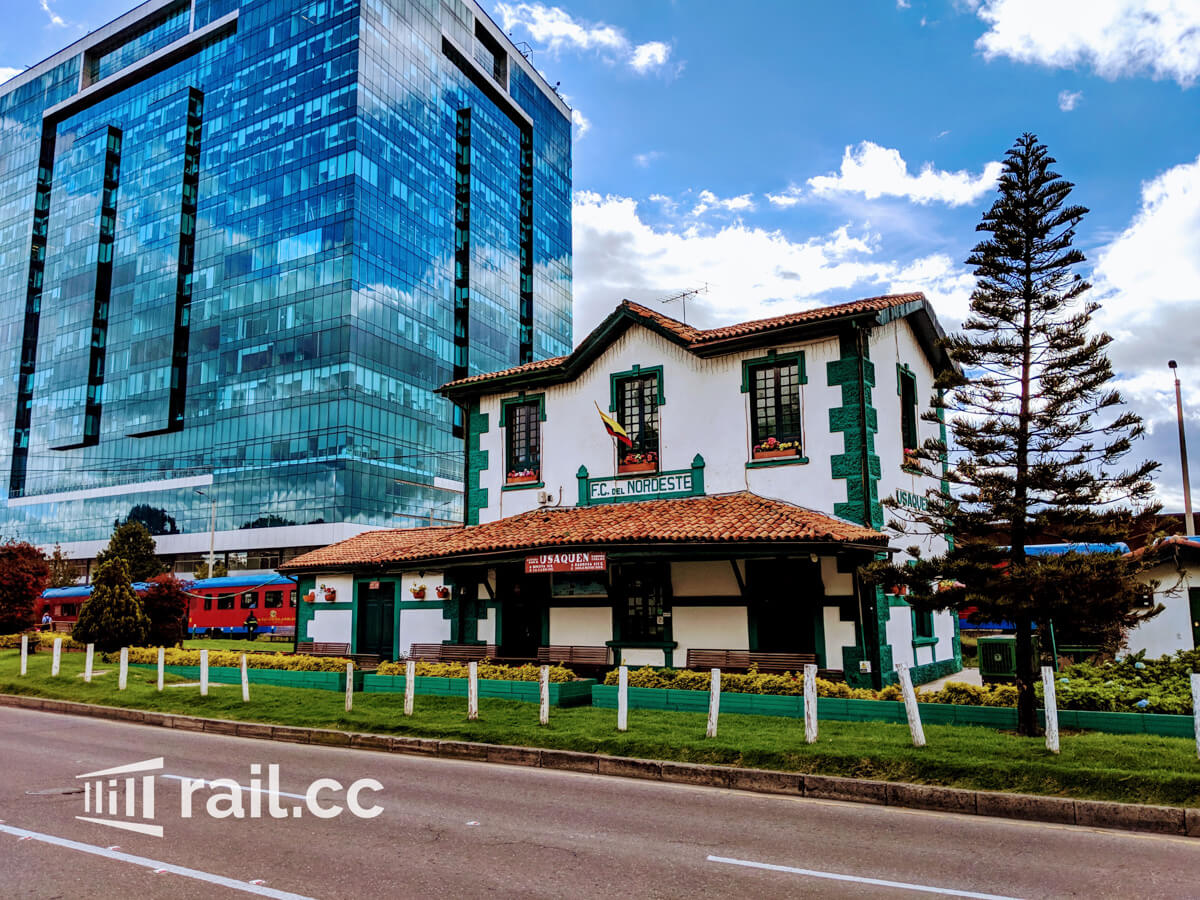When I had a look at the 3,304 km long Colombian railway network, I figured that this country could be easily travelled by train. My joyful anticipation quickly vanished into thin air once I learned that this railway network was only – if at all – operated by cargo trains, because the Colombian National Railways had been liquidated in the 90s. (Fun fact: If you’re travelling from Calí to Buenaventura, you will have the opportunity to take a motorcycle-run rail trolley – sounds like great fun!). The only active “passenger train” in all of Colombia turned out to be the “Turistren” (pretty obvious: Tourist train), which has been operating since 1992 and services the, believe it or not, 56 km long track between the capital Bogotá and the small town of Zipaquirá. I was more than ready to engage in this little, Colombian adventure and can already tell you, I wasn’t disappointed. You can read everything about my unexpectedly entertaining day trip in the following post. Have fun!
Bogotá
The 8 million city has a well deserved reputation of being dangerous, loud, chaotic, … but actually, Colombia’s capital has changed for the better during the last couple of years. Particularly recognizable, if you look at the old town, “La Candelaria”, which has been a “Favela” (span.: slum) up until recent years, but now is one of the safest and most beautiful areas in all of Bogotá. With its often more than 200 year old, colourful, colonial-style houses at the foot of Montserrate, you’ll have an incredible view over the versatile metropolis.Tickets and prices for the Turistren
You can buy tickets for the train either online, at the website of the Turistren www.turistren.com.co, via phone (+571 316 1300), or at one of the two stations (Estación de la Sabana and Estación Usaquén). It is recommended to buy the tickets in advance, because they can sell out quickly, due to the popularity of the train and its rare departures (only Saturdays and Sundays, as well as public holidays).Return tickets for adults cost COP60.000 (€16,50). There are discounts for kids under 12 and pensioners over 60, discounted to COP54.000 (€14,90). A single trip, or a return trip on a different day is not possible.
If you buy your tickets online or via phone, there will be a service-surcharge of 6.000 COP (€1,60), as well as an extra COP15.000 (€4,14) for delivery to your door, or an extra COP10.000 (€2,75) if you pick them up at the train station.
So if you’re planning to stay in Bogotá for a while, which I would highly recommend, it’d be a good idea to purchase the tickets in person at the train station to save some extra costs and avoid misunderstandings (online and on the phone, you will need good Spanish language skills!).
Timetable and train stations
As I’ve already mentioned above, the train only runs Saturdays, Sundays and on Colombian holidays, and you should definitely double check on the Turistren’s website when you’re planning your trip, to avoid any disappointment.There are two possible train stations to board the train. The first is Estación de la Sabana, which is located in the city centre and within walking distance (around 30 min) from the Candelaria and the second can be found in Usaquén a very safe and popular part of town, about 11 km North of the city centre.
According to the timetable, the departure of the Turistren are as follows: departure at Estación de la Sabana at 08.15 am. The train arrives Estación Usaquén at 09.05 am and gives passengers 10 minutes time to board. So the departure from Usaquén is at 09.15 am. The train reaches its destination Zipaquirá at 11.05 am, stops there for an hour and 30 minutes, before it continues to Cajicá at 12.35 pm, which already lies on the way back to Bogotá. At 3.15 pm, the train departs from Cajicá and reaches Usaquén station at 4.30 pm, and its destination station, Estación de la Sabana at 5.30 pm.
Here you can find an overview in the bottom left corner of the poster:
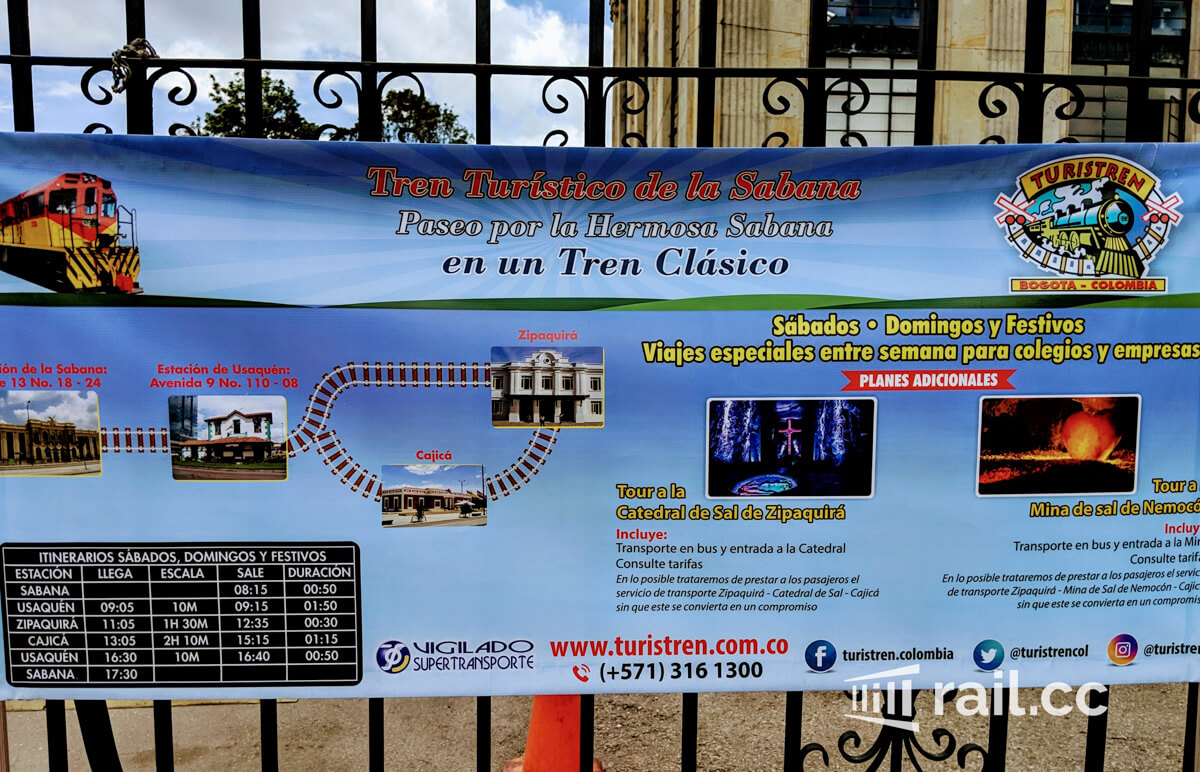
Please check the current timetables before your trip on the website of the Turistren.
Where to stay in Bogotá
If you’re looking for an amazing view over the city, combined with a comfy home for one – or more nights, you will be in good hands at the Fernweh Photography Hostel.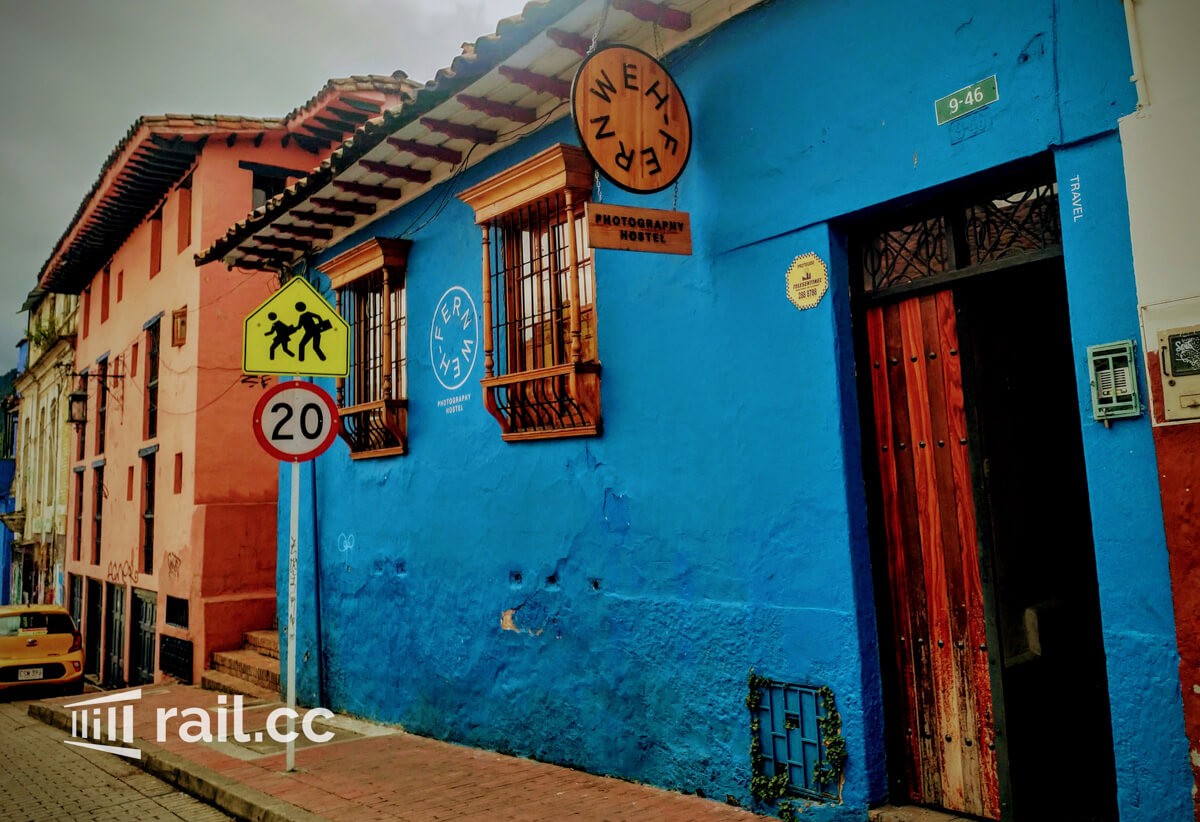
Besides the usual shared dorms, they also offer private rooms, as well as the „Mirador“ room (span.: viewpoint), from where you’ll literally have the best views over Bogotá. The cosy and welcoming hostel is located in the aforementioned Candelaria and is nestled amongst hip bars, good restaurants and museums, which are all easily reached by foot. For my trip, I chose the slightly extravagant Mirador room, since one not only gets a beautiful view, but also a small living room and a study with a little more privacy, even if the hostel also offers really nice common rooms to work and rest.
The room comes with not only a comfy bed and hammock (if you like to have a choice), but also with a mini fridge/minibar, on top of which I surprisingly found a small basket with a little choice wine (of course, they come with a price, yet a moderately cheap one, of COP30.000 – €10 not too pricey).
I did skip the wine for now, since I wanted to be fit for the next day; my alarm was set for 7 am. Here I need to mention that breakfast is included, so you don’t have to spend your morning before the train trip in the search of something edible. And I have to say, the breakfast is truly splendid. You are given a choice between pancakes, arepas (a Colombian classic) and smoothie bowls.
Buying tickets at Estación de la Sabana
Since I arrived in Bogotá a few days before my scheduled departure, took the opportunity to buy a ticket in advance at the Sabana Station, located in the heart of the city. The station building, which has been inaugurated in 1917, is located on a busy street but is easily recognizable by its highly emphasized neoclassical architecture.
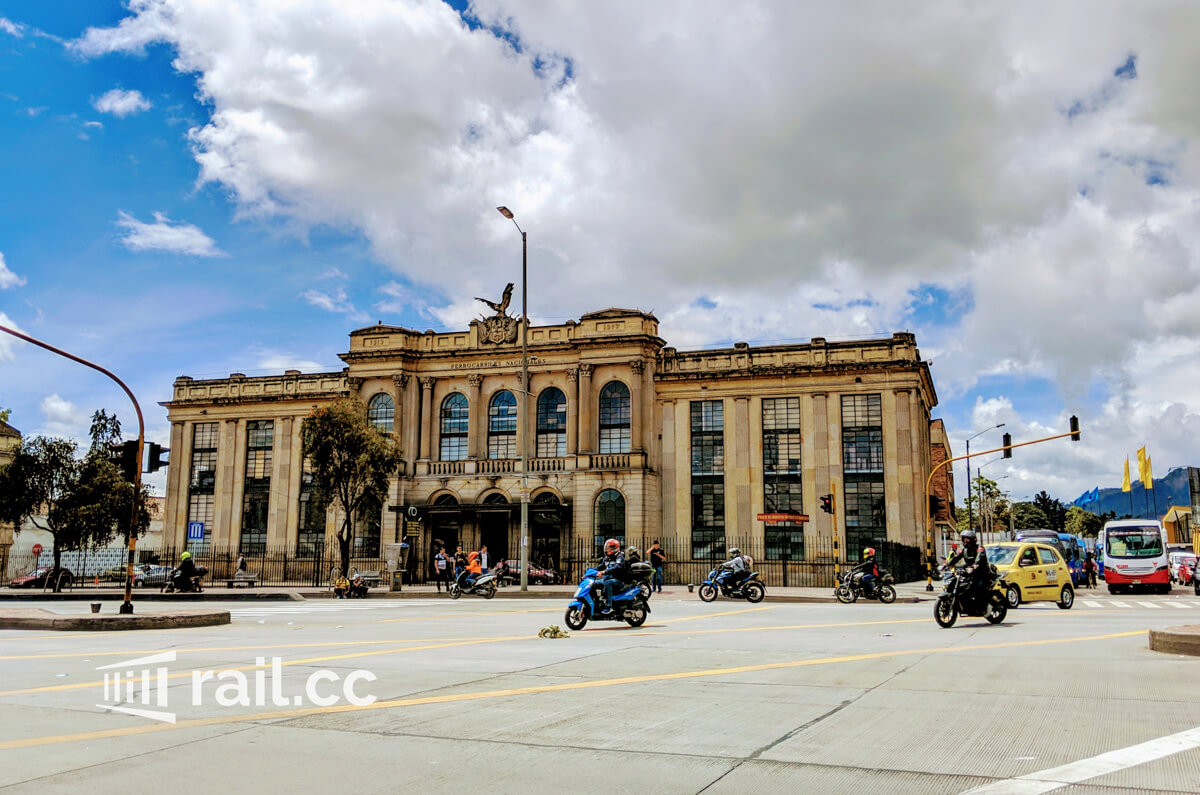 Estación de la Sabana from the outside
Estación de la Sabana from the outside
A sign points out the Turistren’s ticket booth, although I found myself in front of a locked gate. Unswervingly, I started looking for an alternative entry and eventually found it on the left side of the building, in the shape of a seemingly temporary police station. After explaining in broken Spanish that I was here to buy a train ticket, the friendly officers handed me a visitor’s pass in exchange for my ID and let me pass. To my delight and surprise I found myself in the front area of the station’s entry hall, which also serves as a small police vehicle museum these days.
After having a look around, I entered the big waiting hall which, to my surprise, was completely empty. Just a few lonely plastic chairs next to a big glass front, which allows you to have a sneak peek at the trains.
Although I wasn’t allowed to see the platform yet; a friendly lady at the platform entrance informed me I could do so on the day of the trip. On the left hand side of the small hall you will find the entrance to the ticket office, including a tiny souvenir shop (as it turned out on the day of my departure, there is also another door, which leads to the cafeteria, from where you can enter the platform).
At this point, I should probably mention that one generally won’t get very far with English only (maybe, if you’re in big luck). Luckily, the Colombians are extremely helpful people, which is why I am sure that you can manage to get a ticket, even without any Spanish skills (as long as you can offer a smile, some Charades-expertise and maybe a piece of paper with your travel dates). Payment can be done in Cash (“En effectivo”) or per card (“tarjeta”). So after I paid, I was proudly holding a small envelope with the ticket, a small timetable and a menu in my hands.
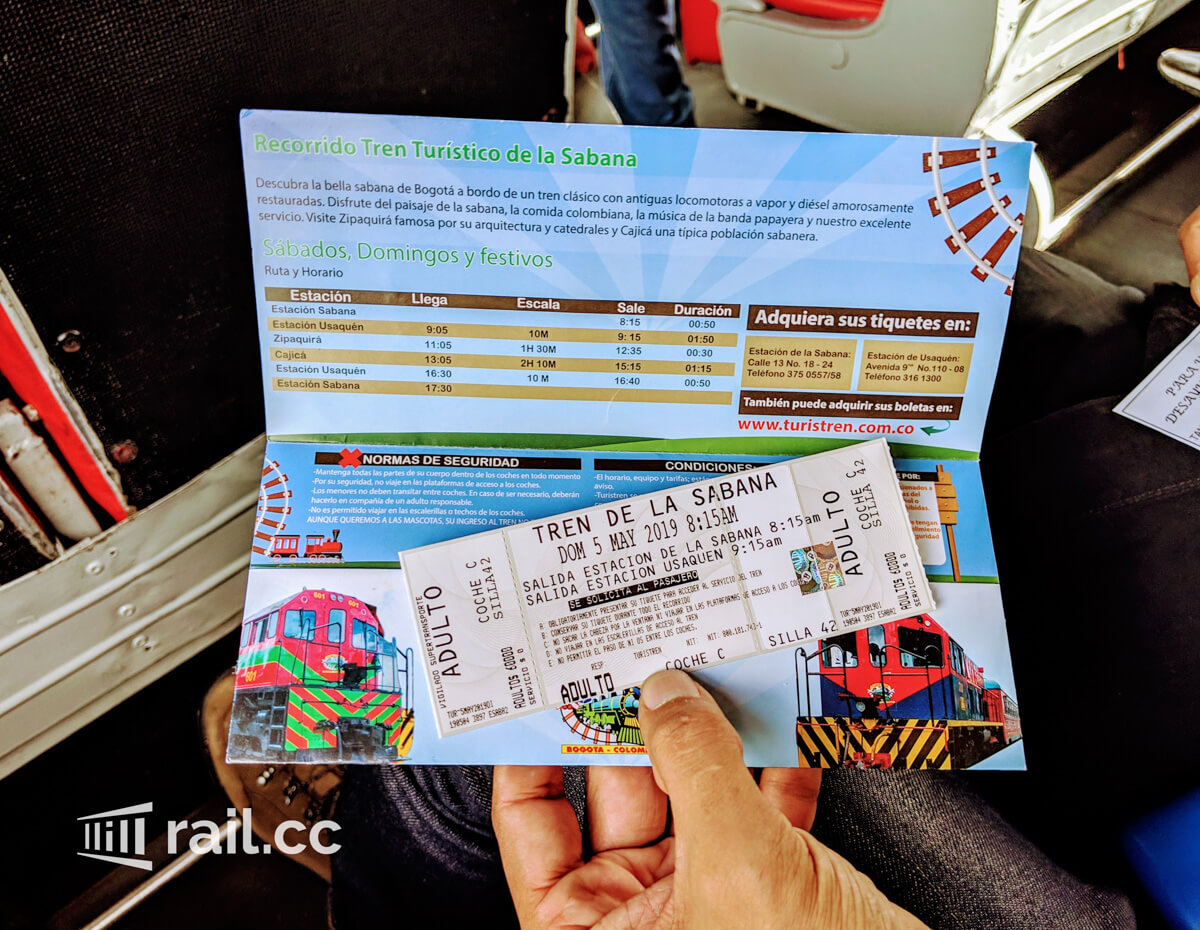
Departure from Estación de la Sabana
On the day of my trip, my alarm goes off at 7 am. I have a quick breakfast and decide to walk to the train station, since it’s Sunday, which means that the famous, weekly “Ciclovía” is taking place in Bogotá. That means that most of the city’s roads are closed for cars from 7am to 2pm, to make space for Bogotá’s passionate cyclists and pedestrians. Nevertheless, it is possible to take a taxi (luckily, they are all equipped with taximeters, so no surprises!) or the bus (stop “La Sabana”) to get to the train station. Although you should evaluate the situation first, since it can take longer than usual. On this Sunday morning, the streets are still empty and the walk from the hostel to the station only takes 25 minutes of easy walking. Again, I enter the station area through the small police station, where I gain access by showing my train ticket this time.
In contrary to the day I purchased my ticket, the waiting hall is already full of people. Clueless, I get in the queue, although it seems to be only for senior citizens. A Colombian woman in front of me turns around and asks me to my huge surprise „Sprechen Sie deutsch?“ („Do you speak German?“) I have to laugh and answer „Yes.“ She then explains in German, that I have to go to the cafeteria first to board the train. No sooner said than done, I make my way to the cafeteria, which – as I already mentioned before – is located in a side room next to the ticket booth. There are already dozens of passengers waiting and listening to an officially dressed woman on a microphone, who quickly explains everything important there is to know about the upcoming trip.
Apparently, one has the opportunity to buy a combi-ticket on the train for one of three activities at our destination (more about that later). Also, the woman on the microphone tells us that the train will depart exactly at 8.15 am (for many Colombians, taking the train is obviously a very rare thing to do, which is why the departure time has to be stressed a bit more).
In the cafeteria, I quickly grab myself a coffee for 1.000 COP (€0,35), before I head over to the platform. There is an excited and happy atmosphere of departure. I let myself get caught up in my fellow passengers high spirits and quickly make my way to find my wagon and seat (wagon C, seat 41) stated on the ticket. It is pretty much impossible to get lost, since there is only one platform, with one siding and an unnumbered active track.
The train
To my disappointment, it turns out, that my train is not one of the restored steam trains from the 20’s to 40’s, but a diesel train from 1969. As a quick research on the Turistren’s website suggests, that the diesel trains are unfortunately the only ones operating right now. Nevertheless, not only the locomotive, but also the restored wagons dating back to 1958, are a real eye-catcher in red and blue, and my earlier disappointment quickly vanishes.
In the Turistren
The Turistren’s interior, as well as its exterior, are blue and red, and very well maintained. The aisles are clean, the seats are covered in neat fake leather, even if they’re not very comfortable, which I don’t mind for such a short ride. There is also quite a little surprise, which I will tell you about a little later in the text ;) There are luggage racks above the 2-row seats, and at the end of the wagon you can find a rubbish bin, as well as a toilet for women, and one for men.
The very clean toilets are actually equipped with toilet paper, which is pretty uncommon for Colombian public toilets. However, take some with you though, if you want to be on the safe side. Also, in case your battery is running low due to all the filming and picture taking, there are even two power sockets at the end of the aisle.
To my pleasant surprise it’s possible to open the windows, even if it’s forbidden to lean out of them for obvious safety reasons. There are no travel categories, although I was able to spot a wagon, which – other than the others – had curtains and tables for four-seat chairs (unfortunately, I couldn’t get any more information on this). There also is no restaurant compartment, which you actually don’t need, since there will be a little trolley pushed through the train during the trip, selling tasty Colombian treats (e.g. Tamales, a Colombian speciality – rice, vegetables and meat, slowly steamed in a banana leaf; Obleas – wafers topped with caramel; as well as snacks and hot and cold drinks). I do have to warn you about the coffee, which is delivered to you with an unbearable amount of palm sugar, making it nearly undrinkable for black coffee drinkers like me. All in all, you definitely won’t have to starve and the prices are pretty cheap (see the „menu“, which you get with your train ticket).
The view from the window
Even if the Turistren advertises with the beautiful Sabana landscapes, it mostly runs through the city of Bogotá. Personally, I didn’t mind that at all, because it’ll turn you into a silent observer of the daily, Colombian life. The train snakes along masses of cyclists (Ciclovia!), Colombians, taking pictures of the train and improvised, temporary huts.
During the ride, one starts to realize just how special this train must be. Suddenly you turn from observer to being observed. Families, couples, young and old alike, stop, take out their phones and start taking pictures and filming the passing beauty of days long gone – with me inside it. I am happily being infected by this merry atmosphere and wave back to everyone, who’s waving me. A very long process. After about 2 hours (very slow) ride, you’ll find yourself back in nature after all.
Music!
After spending any time in Colombia, you will quickly realize that there will always be loud music blaring from some speaker; day or night. To my pleasant surprise, this little feature of Colombian culture has also been adapted by the train. During the trip, every wagon will be able to experience some traditional live music, played by a marching band.
My fellow compartment passengers turned out to be an especially cheerful bunch (I believe, they were on a company trip), that really elevated the mood. After about three encores, the band simply had to move on, which is why the bespoken passengers took the opportunity, to keep singing themselves. A true spectacle!
So if you’re imagining a quiet, uneventful trip, you’re very wrong. But of course, then, it wouldn’t be much fun anyway.
After almost 3 entertaining hours the Turistren reaches its destination station, which is not a real railway station, but only an unmarked track section. Everyone gets out, so I follow my fellow travelers.
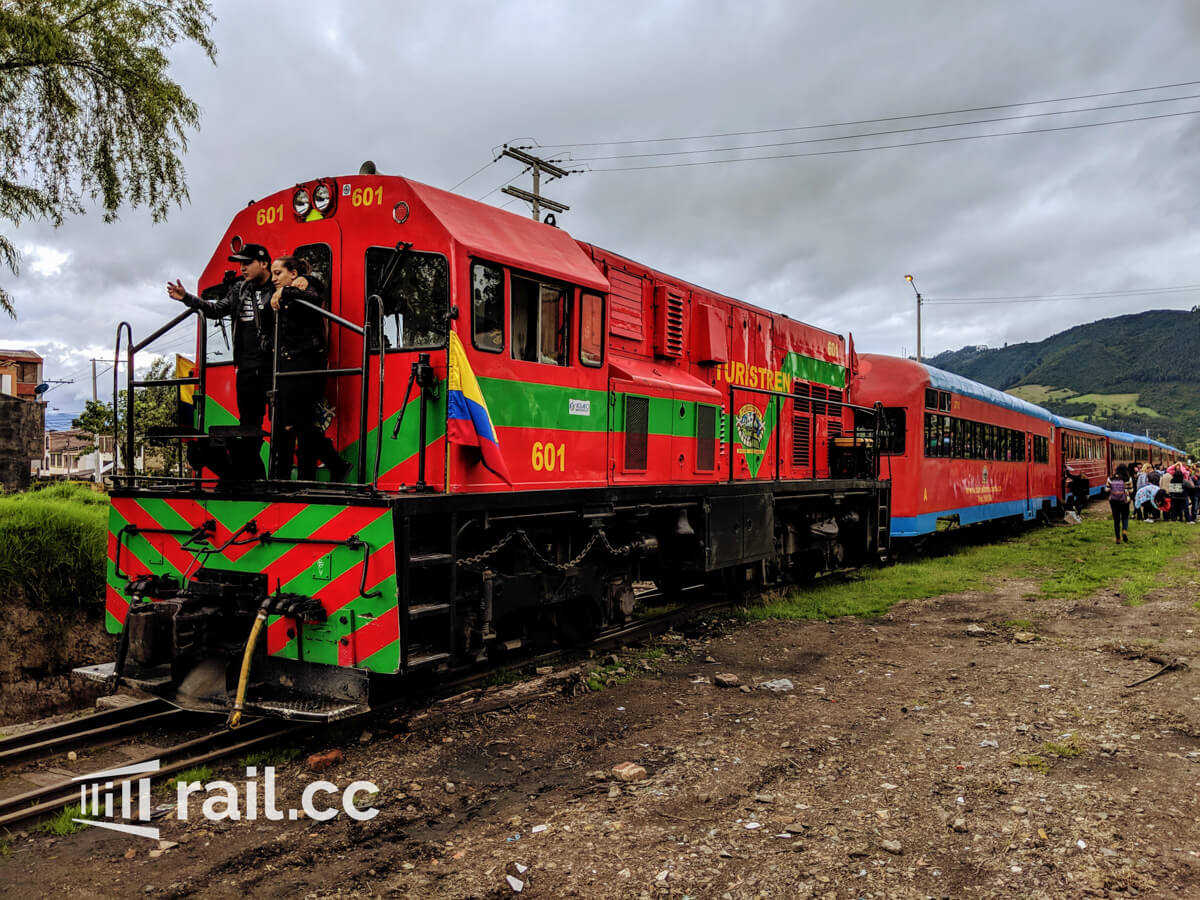
Activity options
The Turistren also offers another service, which makes a tourist’s life easier. Since the trip „only“ goes to Zipaquirá and back to Bogotá, there are various activities in Zipaquirá you can choose from. The cheapest, and possibly most boring option is to explore the little town by yourself, get back to the train at 12.35 pm sharp and spend 2 more hours in Cajicá, before the train departs. But there is also the possibility to explore Zipaquirá with a one-hour guided tour for COP8.000 and return together with your fellow passengers to Cajicá. The most popular, but also more expensive options are: A visit to the famous salt cathedral of Zipaquirà (COP64.000), or to the salt mine of Nemocón (COP40.000). Both of these tours offer an organized pick-up by bus from the stop in Zipaquirá, from where you are driven to either one of the points of interest to spend a certain amount of time there and get picked up by the bus to bring you to Cajicá. Which leaves enough time for lunch before the train heads back to Bogotá. Generally, because of the shortage of time, you can only opt for one of those four options. The tickets for these options can comfortably be purchased in cash on the train and you won’t have to deal with anything else.
Personally, I opted for the excursion to the salt mine (a little less touristy than the cathedral and very recommendable). Unfortunately, everything feels a little rushed, since you only have an hour for the guided mine tour (although everything was very well organized).
The trip back from Cajicá to Bogotá (Usaquén)
After my little excursion to the salt mine, we arrived back by bus in Cajicá on time, where I had a quick lunch (on the return trip, there won’t be any food trolleys on the train) and walked back to the train, which was already waiting at the easy to find train station. Now to the big surprise I mentioned before: Even though the wagons hadn’t changed direction (and I definitely was in the same one that I was in during the trip there), the seats had miraculously turned around. I tried to find out how they managed to do that and looked for some sort of lever under the seats, which I didn’t find. I guess it will forever be a mystery to me how the Turistren managed to turn all the seats around.
With 10 minutes delay, the train slowly snakes towards the capital. Even the band came by one last time and I enjoyed the slightly wobbly, gentle ride (the company excursion group had calmed down a bit by now as well). Just before arrival at Usaquén station, I decided to exit the train there, to explore this yet unknown part of town – Especially because the little green-and-white station building looked extremely cute, and I wanted to get a closer look.
Where you get in or out doesn’t really matter in terms of ticket prices. In the cute little Usaquèn station, there is a ticket booth and a small waiting area, where you can hang around before your departure, if you wish to.
Bottom line
Even if the word „tourist train“ might sound a little deterrent, I truly had a fantastically entertaining day. I became observer of daily life, got the chance to ride in a beautifully restored piece of history and was transported safely to my destination and back. If you’re planning to spend a weekend (or longer) in Bogotá, you really shouldn’t miss this very reasonably priced, and unique little gem. 👁 7626

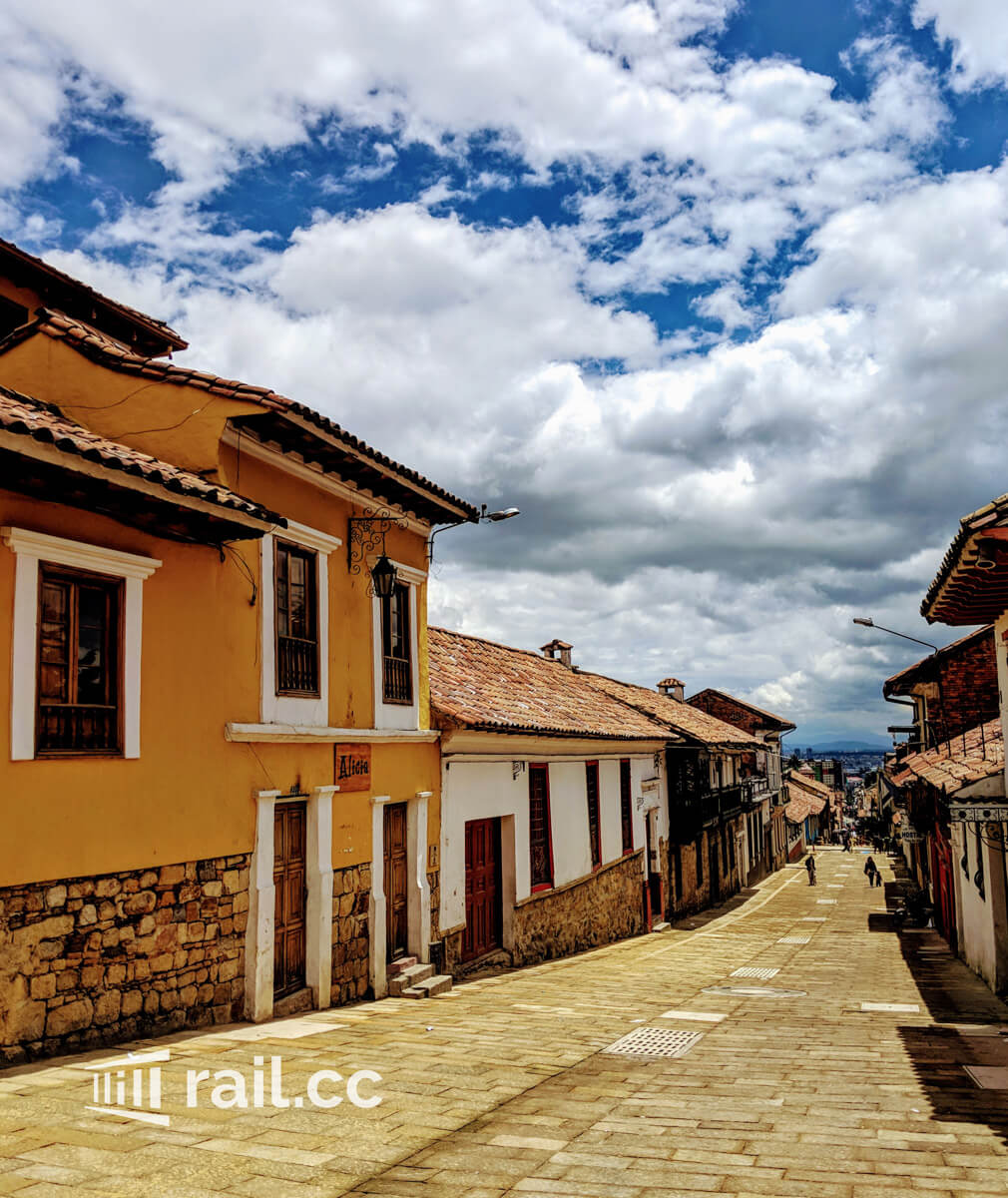
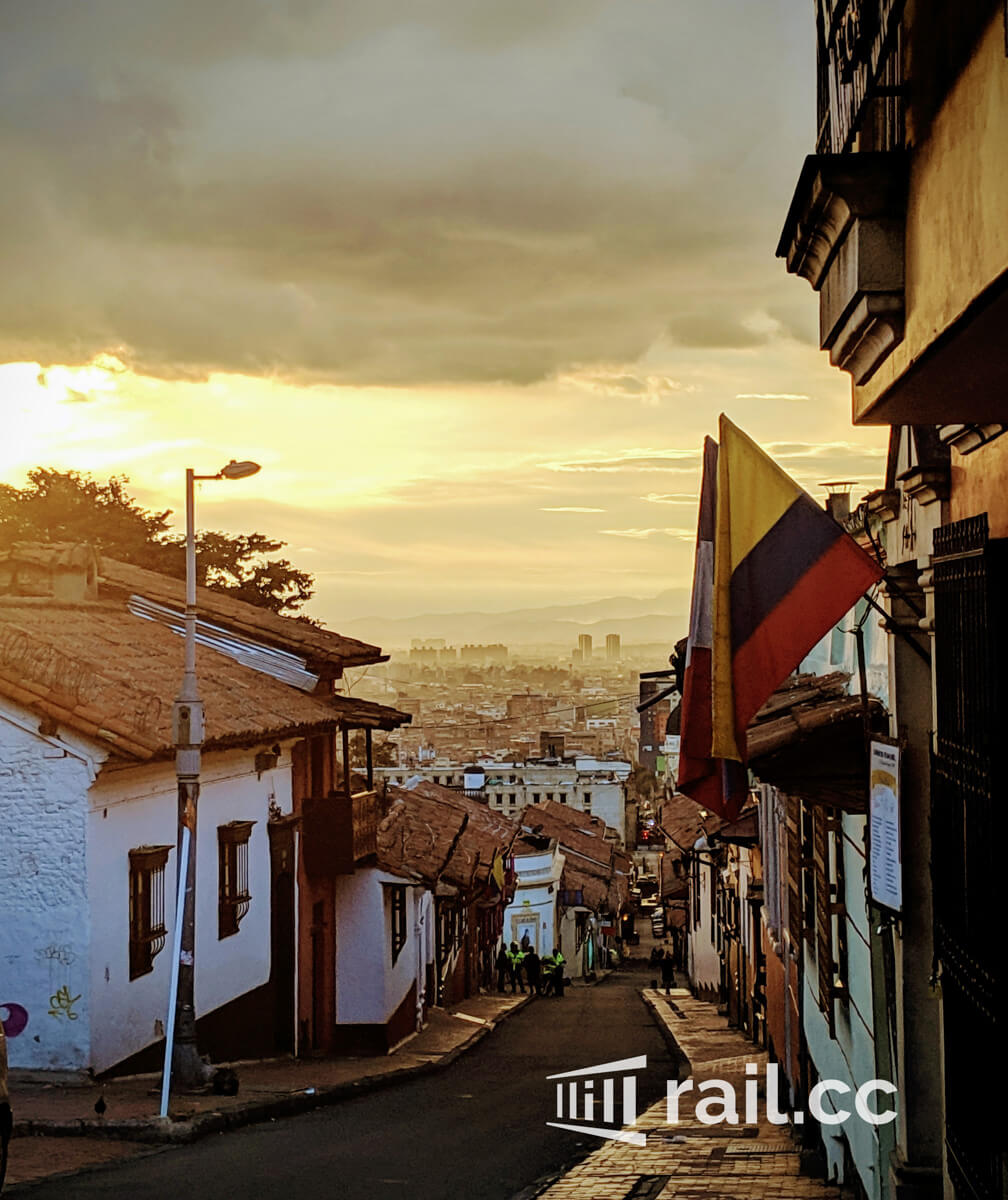
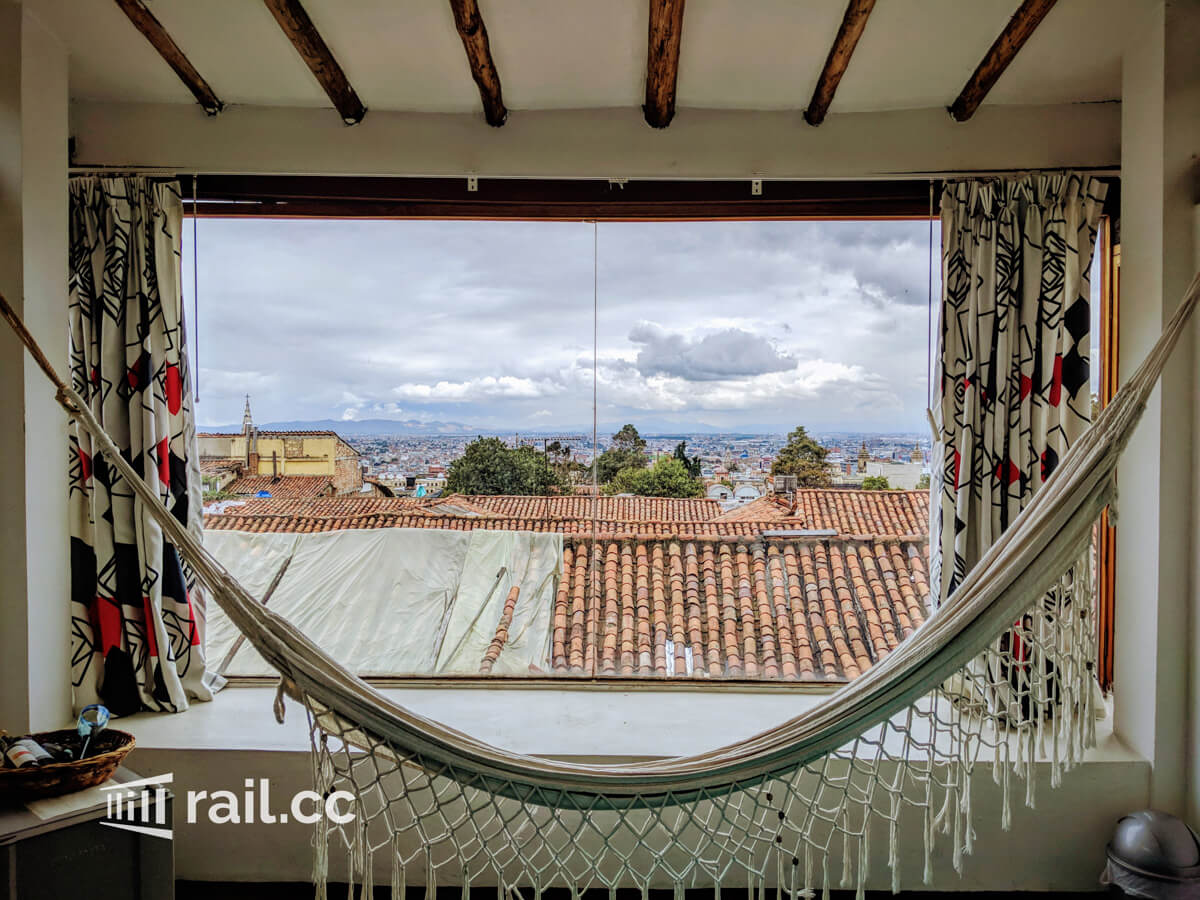






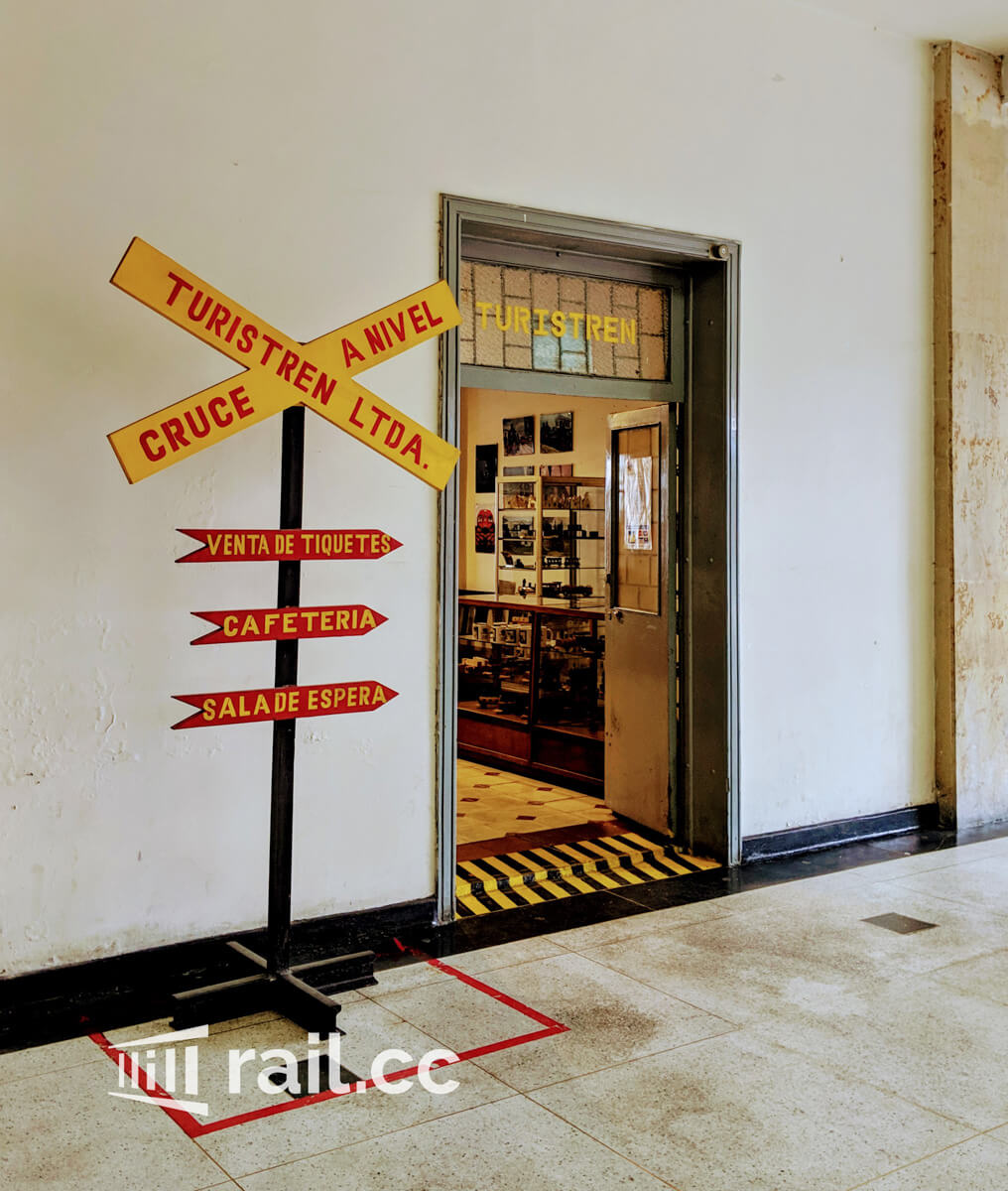

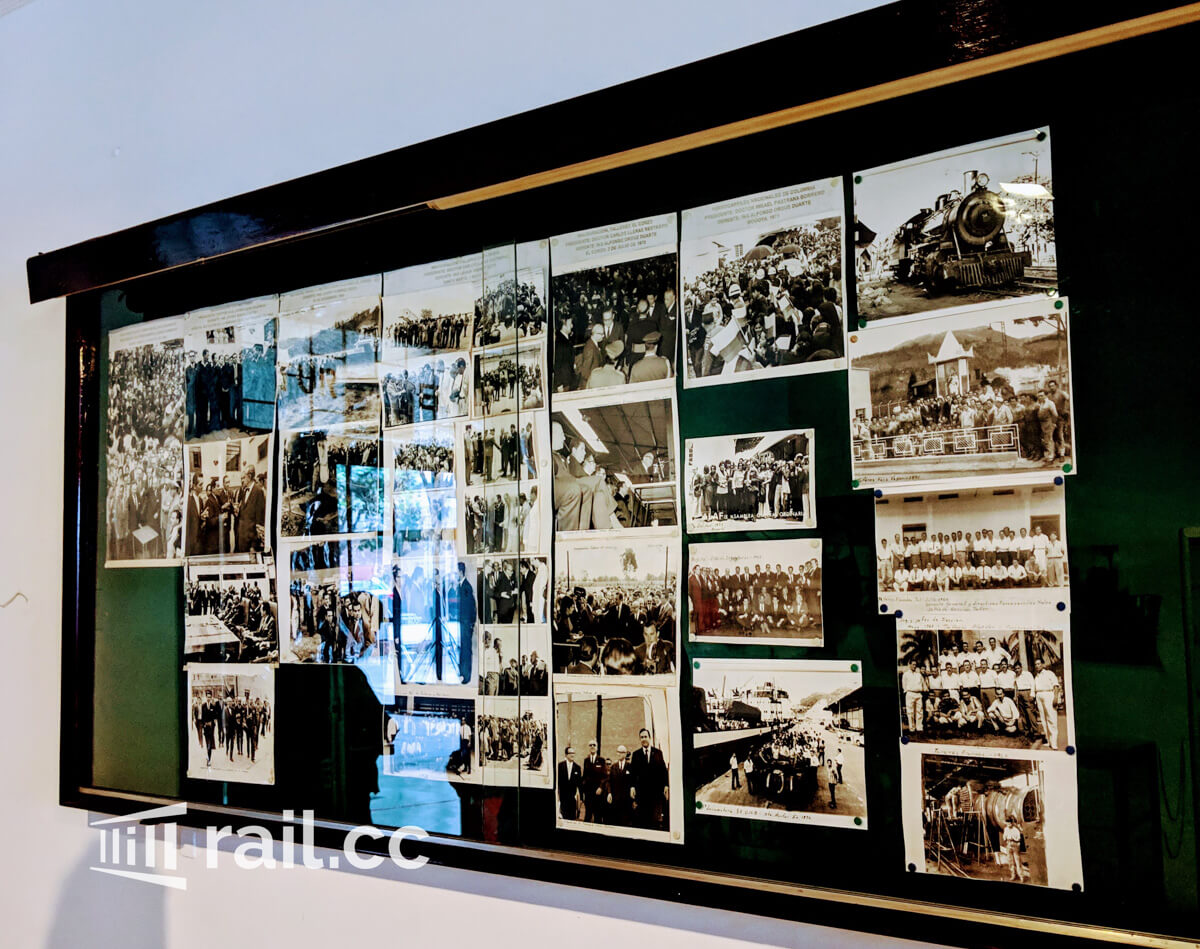
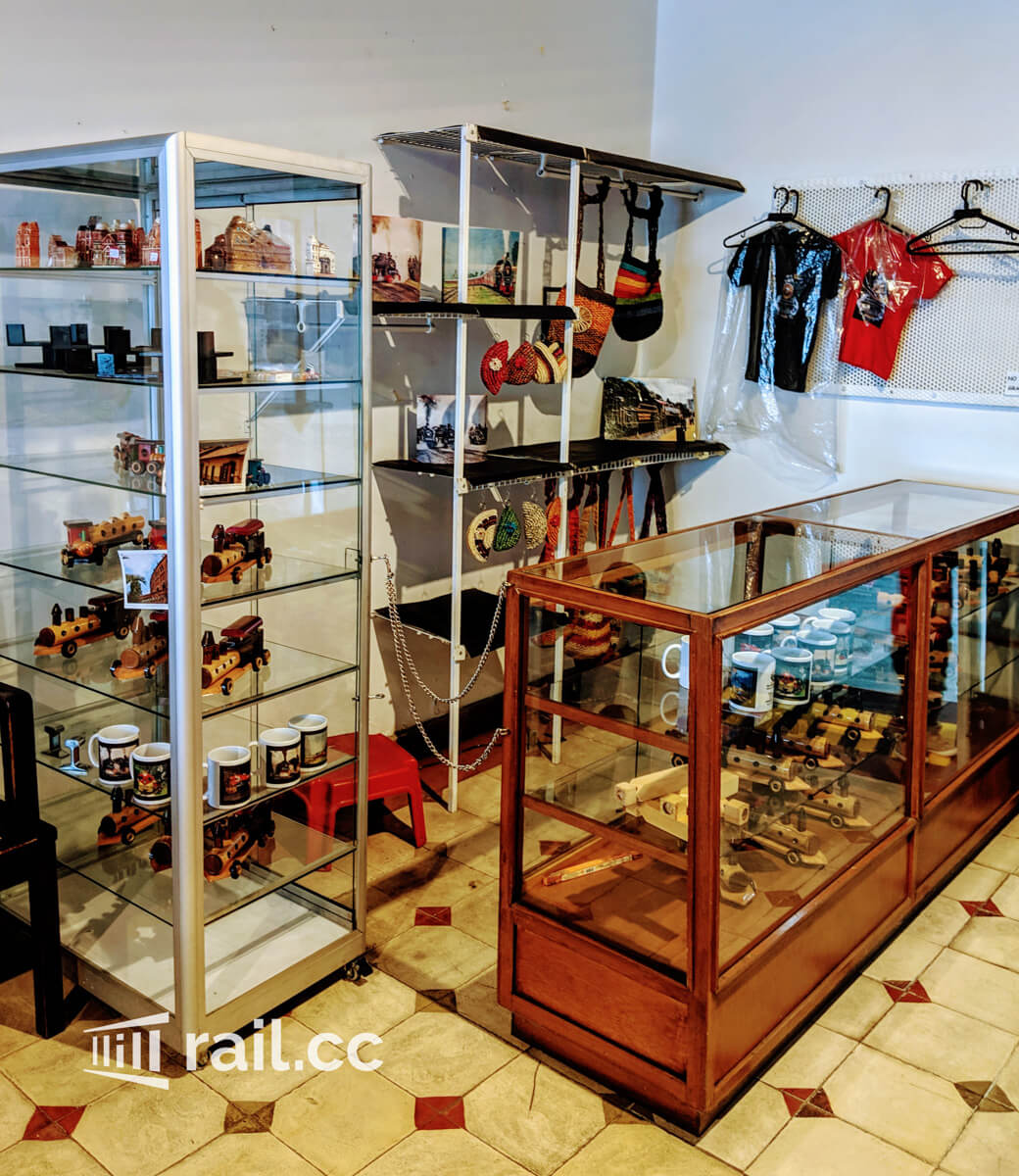
![Price list for activities in Zipaquirá]](https://rail.cc/blog-images/bogota-zipaquira/turistren-bogota-zipaquira-125646.jpg)
